If you have been to China or seen different pictures of the country, you’ll notice one thing stands out the most – dragons. You’ll find dragons incorporated in different architecture in China from colorful paintings to huge and majestic statues. They are also incorporated in many of the Chinese festivities, like Dragon boat racing or the Dragon dance is done on almost every occasion.
Dragons hold a very important position in China. In this post, we are going to look at what the dragon symbolizes in Chinese culture and the mythologies that surround it. We’ll also look at the different types that exist and what they stand for.
what is the Chinese dragon?
The dragon is an animal from ancient Chinese mythology and is considered one of the symbols of the Chinese nation. According to legend, dragons have scales like fish and can fly, transform, and control the weather. Alongside the phoenix and qilin, dragons are regarded as auspicious creatures, often associated with imperial power in ancient times. The Chinese dragon is a mythical creature that combines features of fish, crocodile, snake, pig, horse, ox, and other animals, as well as natural elements like clouds, lightning, and rainbows. It has a history of approximately 8,000 years. As a participant and witness of the great fusion of the Chinese nation, the spirit of the Chinese dragon represents unity and cohesion. Additionally, the dragon is associated with water and is responsible for bringing rainfall and managing water, reflecting its mission to benefit humanity. In modern society, the dragon has gradually evolved from a mythical creature to a symbol of good luck. As a symbol, the dragon represents concepts such as soaring, invigoration, exploration, and transformation. Therefore, the spirit of the dragon signifies the spirit of striving and pioneering.
what is the Chinese dragon called?
The Chinese dragon is called “Long” (龙) in Chinese. The term “Long” specifically refers to the mythical creature of the dragon in Chinese culture. It is one of the most iconic and revered symbols in Chinese mythology and folklore. The Chinese dragon is distinct in its appearance, often depicted as a long, serpentine creature with scales, claws, and a prominent mane. It is associated with numerous positive qualities such as power, wisdom, prosperity, and good fortune. The Chinese dragon holds a significant place in Chinese history, art, and symbolism, and it is deeply ingrained in Chinese culture as a symbol of national identity and cultural heritage.
The correct English transliteration for 龙 (Long) is “dragon.” The term “loong” you mentioned is not the standard English translation for the Chinese dragon. While the pronunciation of “loong” may be closer to the Mandarin pronunciation, the widely accepted English term for the Chinese dragon is simply “dragon.” It is important to note that the Chinese dragon and the European dragon (often associated with mythology and folklore) are distinct creatures with different cultural significance and characteristics.
Alternate Names and Beautiful Titles of the Dragon: There are various alternate names and beautiful titles for the dragon, including Hui, Qiu, Qinglong, Yunchi, Panchi, Jiaolong, Jiaolong, Huolong, Jinlong, and more.
Hui: Hui is an early type of dragon that was imagined based on reptiles, particularly snakes. It is often associated with water and is considered the juvenile stage of a dragon. Hui dragons were depicted in the late Western Zhou period on bronze decorations, although they are not as common.
Qiu: Qiu refers to dragons that have not yet grown horns. It is a term used for dragons in their growing stage.
Panchi: Panchi refers to serpent-like mythical creatures in the dragon family. They are early dragons that do not possess horns.
Jiao: Jiao generally refers to scaly dragons associated with the ability to cause floods. It is believed that Jiao dragons, once they enter water, can create clouds and fog, and soar into space.
what is the Chinese dragon made of?
The dragon’s appearance has varied throughout different periods in Chinese history, from thousands of years ago in undocumented cultural eras to the Shang and Western Zhou dynasties, and later in the Warring States and Pre-Qin periods. Vessels and decorations depicting dragons have always been abundant, featuring winged or wingless, horned or hornless variations. The animal-bodied dragons of the Liangzhu culture and the serpent-dragon of the Chahe archaeological site exhibit significant differences in their imagery. Therefore, some scholars believe that the dragon’s form has multiple origins and sources.
During the Tang and Song dynasties, the dragon’s portrayal featured a robust and plump body, resembling a snake. In the Song dynasty, scales appeared on the back and tail, with a row of fins on the tail. With characteristics reminiscent of a lion, it had a round and chubby body, and a mane behind its head. During the Tang dynasty, forked deer antlers emerged, although initially they were somewhat similar to regular deer antlers. The upper lip was long and pointed, while the lower lip was short and did not roll downward. Dragon wings took on a flowing ribbon-like form. In the Song dynasty, four-clawed feet became prominent, with the hind legs often intertwining with the tail in a coiled fashion.
what does Chinese dragon look like?
The dragon, known as “Long” (龙) in Chinese, is a creature from ancient Chinese mythology and one of the symbols of the Chinese nation. The “Er Ya Yi” describes it with features such as antlers like a deer, a head like a camel, eyes like a rabbit, a neck like a snake, a belly like a mirage, scales like a fish, claws like an eagle, paws like a tiger, and ears like a cow. The “Lun Heng” mentions a common depiction with a horse’s head and a snake’s body. The “Huainanzi” records five types of dragons: flying dragon, winged dragon, snake dragon, flood dragon, and spiral dragon.
The Song Dynasty painter Dong Yu believed that the dragon had antlers like a deer, a head like a cow, eyes like a shrimp, a mouth like a donkey, a belly like a snake, scales like a fish, feet like a phoenix, whiskers like a human, and ears like an elephant. In the Ming Dynasty, the “Compendium of Materia Medica” states: “The dragon is a creature with long scales. Wang Fu describes its form with nine similarities: a head like a camel, antlers like a deer, eyes like a rabbit, ears like a cow, neck like a snake, belly like a mirage, scales like a carp, claws like an eagle, and paws like a tiger. It has 81 scales on its back, representing the yang energy of the number nine. Its voice is like the clash of bronze plates. It has whiskers beside its mouth, a bright pearl under its chin, and reverse scales under its throat.”
According to general depictions, the dragon has a snake’s body, a pig’s head, deer’s antlers, cow’s ears, goat’s whiskers, eagle’s claws, and fish’s scales. In the ancient tribal society, the Huaxia tribe in the Yellow River Basin, which had the snake as its totem, conquered other tribes and absorbed their totems, combining them into the dragon totem.
According to legend, dragons are capable of flying, shape-shifting, and controlling the weather. They are often considered auspicious creatures alongside the phoenix and qilin, symbolizing imperial power in ancient times. There are mythical stories such as “drawing a dragon and adding the finishing touches,” “Nezha stirring up the sea,” and “Sun Moon Lake.”
Ancient Chinese people believed that dragons governed rainfall, which determined agricultural harvests. The success of agriculture determined people’s livelihoods, making the dragon the primary “totem” in agrarian society.
Each part of the dragon carries specific symbolism: the prominent forehead represents intelligence and wisdom; deer antlers symbolize prosperity and longevity; ox ears signify being at the forefront; tiger eyes portray dignity; demonic claws depict bravery; sword-like eyebrows symbolize valor; lion’s nose represents preciousness; a golden fish tail symbolizes agility; and horse teeth symbolize diligence and kindness.
Why Dragon Is Famous in China
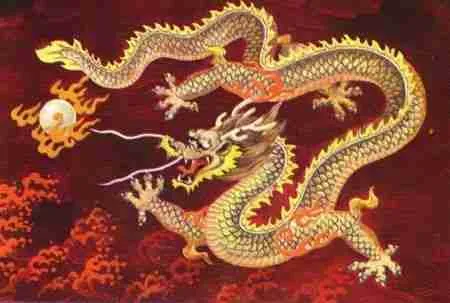
Unlike in Western cultures where Dragons are protagonist creatures in every story, in China, they are considered benevolent and majestic creatures that are kind and bring luck. The dragons are considered important because they are believed to be present during the earth’s creation according to the Chinese.
The Chinese believe that the goddess Nu Kua, who was part dragon, created the earth. She then put up four pillars with a dragon at the top to hold up the heavens. The goddess then created humanity, meaning the Chinese were directly linked to dragons from the very beginning. After the great floods caused by the Dragon kings, Nu Kua came back to earth to repair the damage. She released a legion of dragons to walk among people and aid them. They maintain that after humanity was created, dragons lived among the people teaching them essential skills to survive. The dragons are considered angels of the Orient and represent the balance of all things in the world.
It is also believed that a dragon helped the Yellow Emperor of the Han dynasty, the first imperial line in Ancient China, to begin the prelude of Chinese civilization. The Yellow Emperor was believed to have worked with Yandi a legendary tribal leader, born through his mother’s strong telepathy with a mighty dragon. So, you see, the dragons seem to have played a big role in China’s evolution. That is why they were used as symbols for the Chinese emperors and later among the twelve symbols of the national emblem of the Republic of China.
Why Is the Dragon A Symbol of China?
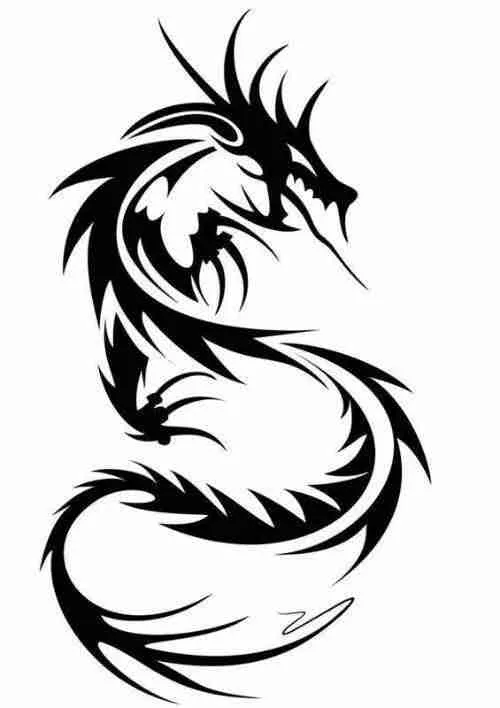
As mentioned, in Ancient China, Emperors used dragons as their symbols. The dragon was a symbol of the divine power of the emperors and their mighty rule over the land. The Yellow Emperor was even believed to have been reborn as a dragon after his death.
The emperors especially used the yellow/golden dragon with five claws as their symbol. The princes and other royal male members used dragons with four claws as their symbols. The wives and empresses of the emperors used the phoenix as their symbolism. This was because Feng Huang (a phoenix-like bird) ruled over all birds, and was seen as the perfect feminine entity to be paired with the Dragon.
These symbols were embroidered in their robes which they wore as a sign of honor. For these reasons, only a select few outsides of the royal family were permitted to adorn dragon robes and jewelry. The common subjects also had dragon paintings and other artifacts in their homes as a symbol of good luck and fortune.
These symbolisms and culture have been carried forward to today, where the Chinese still use the dragon as a symbol of excellence and power. Although it’s no longer a part of the twelve symbols of the national emblem of China’s flag, it is still an important symbol. The Chinese still compare outstanding and successful people to dragons, because dragons represent traits many Chinese admire and wish to emulate.
What Does the Dragon Represent in Chinese Culture?
The Chinese dragon is also known as Lung, Loong, or Long. In Chinese culture, mythology, and folklore, it is considered to be a legendary creature. Unlike in western cultures, the Chines revere the dragon which is seen as benevolent symbols in their culture. According to the Chinese, the dragon is said to resemble many animals. It’s described as having a long tail like that of a snake, with scales like fish and claws similar to those of hawks. They also have antlers like deer’s, a nose similar to a dog’s, a big mouth like a bull, whiskers that resemble a catfish’s, and a mane around its face like a lion’s.
In Ancient China the dragon was seen to represent, divine power, strength, good fortune, and success. That is why dragons were used to symbolize Emperors. Based on the dragon’s attributes, they symbolized the emperors’ nobility, dignity, and wisdom, depicting them as courageous heroes to their subjects. Traditionally, the Chinese also believed that dragons were auspicious powers that had power over the water element and are believed to reside or have resided under large water bodies. They were believed to have power over any body of water, from lakes, rivers, seas to waterfalls. As powerful water spirits, they could command rains, floods, and typhoons. As such, they were seen to have power over seasons and harvest.
Today, the dragon has become a mascot of the Chinese culture representing the people’s pioneering and unrelenting spirit to keep up with the changing times. Based on past beliefs, the dragons generally symbolize the following in Chinese cultures today:
Nobility. Because dragons were used to symbolize the emperor, anyone born in the Year of the Dragon is considered to be more noble and prosperous than the rest. They are considered to be wise, decisive, confident, and strong-willed.
Good fortune. These mystical creatures were believed to be a source of good luck to those they favored. Today, Chinese engrave dragon depictions on their items or as tattoos to attract success and good luck.
A sign of kindness. In western culture, dragons are depicted as aggressive evil creatures that breathe fire. On the other hand, the Chinese view dragons as beautiful creatures that are symbols of warmth and kindness. This is related to the belief that dragons were sent on earth to aid humans.
Masculinity. In the past, men were considered more dominant and influential in the community. As such, they were seen as the mystical manifestation of the dragon. Today, dragons are still used to symbolize male vigor and fertility.
Agriculture. These water spirits are believed to have control over the weather. The male dragons are said to have the power to fly to the heavens and bring rainfall. Hence those who believe in them and worship them, normally pray to them for rain and a good harvest.
Different Types of Dragon Colors and Their Meanings.
According to Chinese Mythology, dragons were beautiful and colorful creatures. Each of their colors carried a special meaning in Chinese culture. The following are the most notable colors and what they symbolize:
Green and Blue.
Blue and green are generally associated with growth, nature, and serenity in Chinese culture. The green and blue dragons were normally the Eastern dragons and they symbolized the beginning of spring, with clear skies and new growth. They were also seen to symbolize health, harmony, and prosperity. As such people looked at them as representations of healing, peace, and rest. They also represent the East cardinal direction.
White.
In the Chinese spectrum of Yin and Yang, white represents the active masculine energy that’s the Yang. In many cultures white is seen as a symbol of purity, however, in China, it is also seen as a symbol of death and mortality. Based on this, the white dragon is seen as a symbol of purity but also as a bad omen for death. It also represents the West and autumn season.
Black.
As the other half of the Chinese spectrum, black represents passive feminine negative energy known as Yin. The black dragon is normally associated with vengeance and power and is often believed to cause storms and floods. In terms of seasons and directions, it is also considered to symbolize the North and the winter season.
Red.
Traditionally, red is associated with good luck and fortune and is often used in many large and happy celebrations in Chinese culture. For this reason, the red dragon is the focus on happy occasions like weddings and festivities like Chinese New Year. Aside from luck the red dragon also symbolizes passion, creativity, and vitality. It also represents the South and summer season.
Yellow.
In Chinese culture, yellow is seen as a symbol of warmth, wealth, solidity, and nobility. It is normally a color set aside for those belonging to the higher class. The yellow dragon was considered the most powerful and superior dragon, which is why emperors used it as a symbol of their rule.
9 Types of Chinese Dragons.
According to Chinese culture and mythology, there are a variety of different dragons. All the dragons have been classified into 9 main categories. The categories are as follows:
Celestial Dragon.
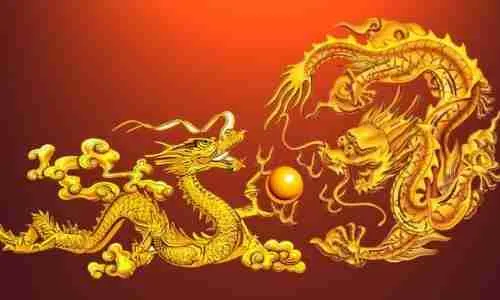
Its Chinese name is Tien Lung. It is a flying dragon that is believed to guard the heavens and pull the divine chariots. It’s considered a very important dragon that resides in the sky because its main duty is to prevent the gods from falling from the sky.
Dragon King.
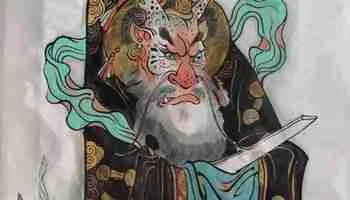
Its other names are dragon god or Longwang. It is considered a very powerful dragon that rules the China sea in all four directions. It is said to appear in different forms but is often depicted as human. It is also a water god with the ability to cause rain and is considered the yang personification of masculine power.
Winged Dragon.
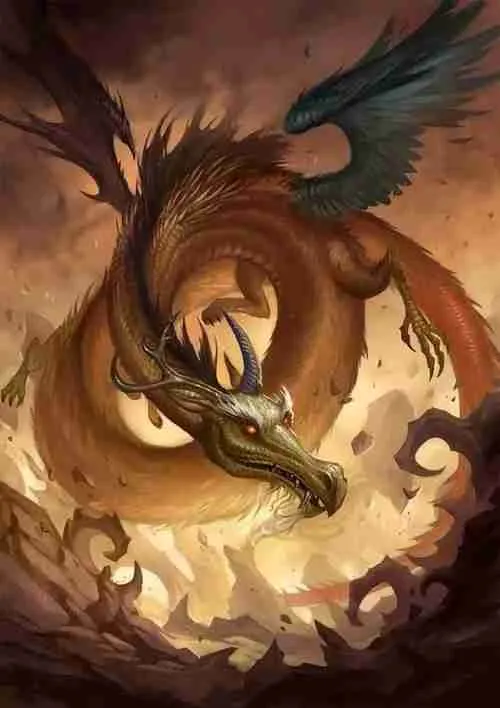
In Chinese is referred to as Yinglong, some also call it the responding dragon. Unlike other dragons, its wings make it unique. It is a water deity, commonly associated with rain and floods.
Hidden Treasure Dragon.
This dragon is referred to as Fuzanglong in Chinese. It is said to be a guardian residing in the underworld where it hoards and protects different types of buried treasure, both man-made and natural. It is also associated with volcanoes since it is said that it forms volcanoes each term it comes out of the underworld to go report in heaven.
Coiling Dragon.
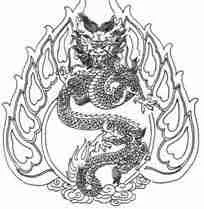
It’s also called Panlong in Chinese. It is a lake dragon that is restricted in water and can never ascend to heaven. It is said to be able to control time. Sometimes referred to as river dragon and said to resemble the crocodile.
Spiritual Dragon.
It’s blue. It is said to have power over the rain and wind. It has to use the rain and wind to benefit the humans on earth.
Yellow Dragon.
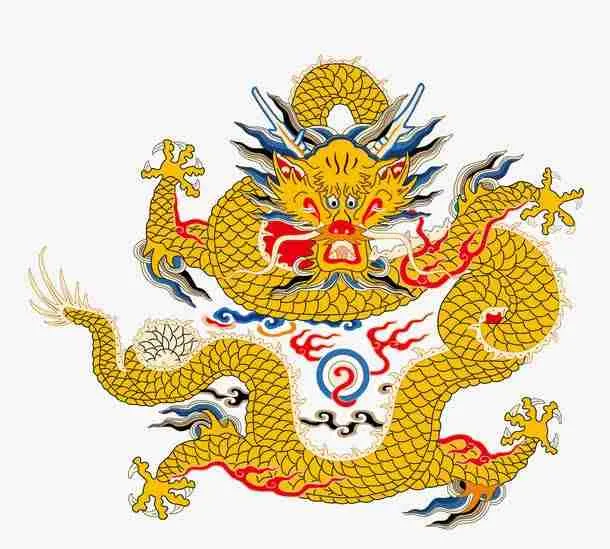
Some people refer to it as Longma the winged horse with scales, that lives in water. It is believed that it emerged from Luo River to teach the emperor Fu Shi the Chinese writing ba gua. Other’s refer to it as Huanglong, the dragon reincarnation of the Yellow Emperor.
Horned Dragon.
It’s also referred to as Lung in Chinese by some people. It is considered to be the most powerful dragon, despite being deaf. It was, however, never considered evil. It was also believed to have power over the rain.
Hornless Dragon.
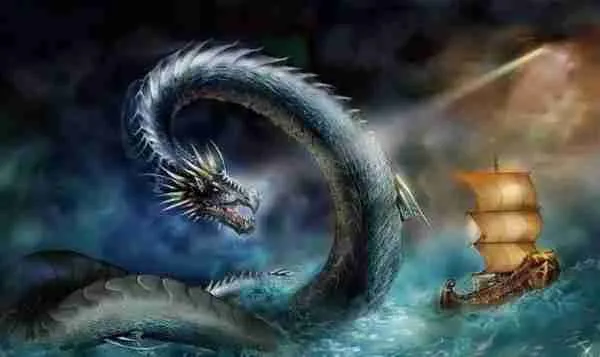
Others refer to it as scale dragon or crocodile dragon or Jiaolong in Chinese. Others call it Il. It is said to commonly give resided in the river, although some say it lived in the oceans. It was said to be the ruler of all aquatic animals.
What Is the Rain Dragon in Chinese Mythology?
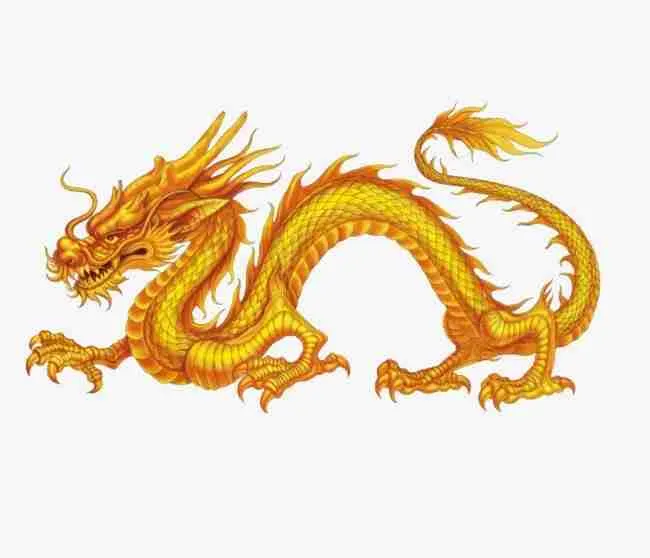
In Chinese mythology, the rain dragon was also referred to as thunder god or a god dragon or Shenlong in Chinese. He is described as having a human head and a dragon body with a drum-like stomach. He is considered to be a significant dragon that has power over the weather. He can control the clouds rains and wind, which all affect agriculture. So, to ensure they had a good harvest, the Chinese would avoid angering the Shenlong. Angering him would mean drought, thunderstorms, and general bad weather.
Why Is Dragon in Chinese Zodiac?
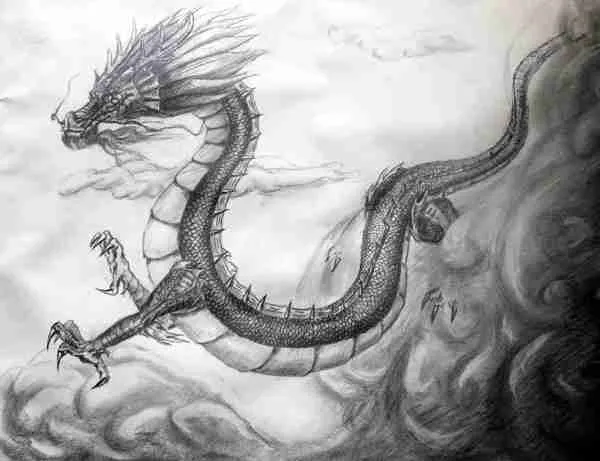
In the Chinese calendar, 12 animals each represent a year in a twelve-year cycle as the Chinese Zodiacs. Each of these animals has certain traits. The Dragon is the 5th animal in the Chinese Zodiac. It is included because it is the only creature that is mythical, hence unique. It is also important as it symbolizes good fortune, good health, prosperity, and balance. As such, dragon years are a popular time when many children are born. It is believed that children born during the Dragon years are said to be lucky and honorable and will grow up to be very successful compared to the rest.
Chinese dragon history
Ancient Times
In the late Neolithic period, jade dragons exhibited ancestral forms, indicating a direct correlation between the emergence of dragons and the animals revered and feared by the local tribal ancestors of that time and region. This association is related to the animal population present in the area during that period.
Shang and Zhou Dynasties
During the Shang and Zhou dynasties, dragon culture gained widespread dissemination, transforming the primitive dragon imagery of the totemic era into true dragon motifs. The Shang dynasty attached great importance to religion and witchcraft, which led to a significant focus on the casting of bronze ritual vessels, essential for religious activities. These bronze vessels showcased various symbolic patterns, displaying deities to be revered and sought for protection. Among these patterns, dragon motifs became a predominant element.
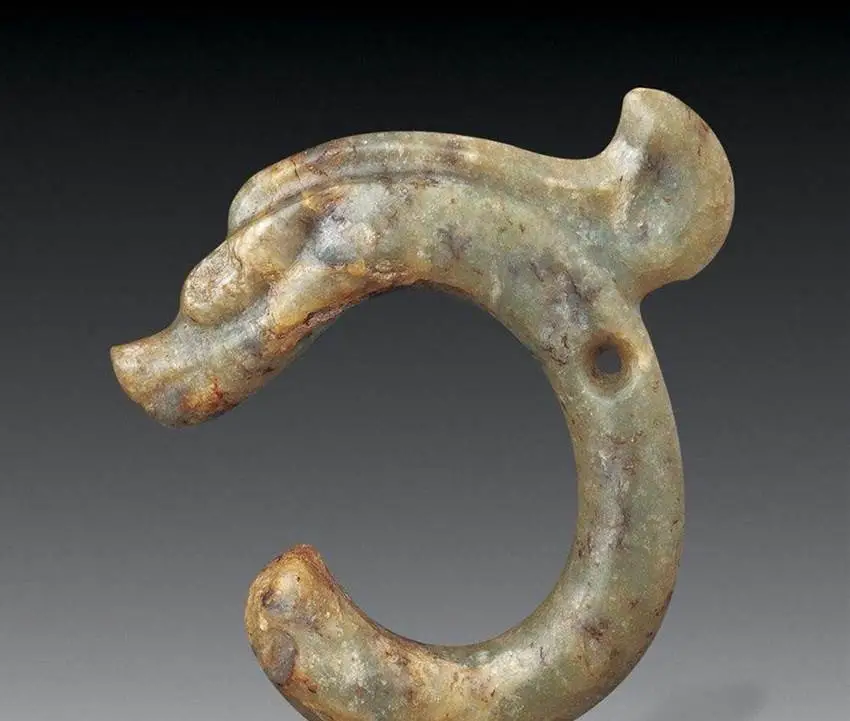
From the Shang Dynasty to the unification of the Qin Dynasty in 221 BC, after more than 1,400 years of evolution, the shape of the dragon gradually took form. From the excavated “C-shaped” jade dragons, their bodies were smooth like snakes, with pig-like mouths. This represented the early form of dragons and was considered a symbol of wealth and status. In feudal dynasties, wealth and status held great importance. During the Zhou Dynasty, the phoenix was also highly regarded by the royal family and was on par with the dragon, leading to the emergence of the motif of the dragon and phoenix dancing together.
Pre-Qin Period
Originally revered by the ancient Chinese ancestors, dragons gradually became associated with the expanding monarchic power and the imperial families as their authority grew stronger. Records in “Lüshi Chunqiu” depict Duke Wen of Jin being likened to a dragon, and the subsequent notion of the First Emperor of Qin being the “Ancestral Dragon.” After the Qin and Han dynasties, the dragon became firmly established as the embodiment of imperial power and an exclusive symbol of the royal household.
During the Qin and Han Dynasties, a period of great unification in China, significant changes occurred as a result of cultural standardization. This marked the unification of the dragon as well. Although the Qin Dynasty was short-lived, it played a significant role in Chinese history. During this period, the dragon’s head became larger and its body became thicker, departing from the slim and elongated dragon of the Zhou Dynasty. The enlarged dragon appeared more fierce and formidable. The Han Dynasty further enriched the image and culture of the dragon, considering it as a totem with great significance, as it was an era of unified rule.
Han Dynasty Period
In the Western Han dynasty, Dong Zhongshu’s “Chunqiu Fanlu” mentions folk activities of praying to the dragon for rainfall and abundant harvests. Dragon imagery is also found in famous silk paintings unearthed from the Han tombs in Mawangdui, Changsha, indicating that during the Western Han period, the dragon had become a widely circulated cultural symbol in society. During the Eastern Han dynasty, dragons had a robust and tiger-like body shape, distinct separation between the body and tail, and some had fins. The horns resembled those of a cow or deer. There were raised ridges below the horns, curving upward at the tips, similar to deer antlers. Dragons had wings and longer animal legs, with a predominant tiger-like form and additional elements of other animal shapes.
Wei and Jin Dynasties
From the Jian’an period to the Wei and Jin dynasties (including the Sixteen Kingdoms era), dragon bodies became slender and elongated, tiger-like in appearance, with distinct separation between the body and tail. The horns slightly resembled deer antlers, and wings varied between being present or absent. Dragons with wings retained a bird-like wing shape, and their legs resembled those of animals.
Tang and Song Dynasties
In the Sui and Tang Dynasties, there were further changes to the dragon. In the early historical records of the Sui and Tang Dynasties, the dragon’s mouth became larger, and its horns started to branch out. These changes were inherited by subsequent dynasties. By this time, the dragon had become well-established, and dragon culture was reinforced. The fish-scale pattern on the dragon’s body was established during the Tang Dynasty. During the Song Dynasty, dragon culture became stable. The dragon’s image during this period included deer antlers, camel heads, ghostly eyes, snake bodies, fish scales, eagle claws, tiger paws, ox ears, fish fins, and fish whiskers. In comparison to the Song Dynasty, the dragon during the Yuan Dynasty had a more elongated head, smaller yet expressive eyes, and a robust body. Dragon claws mostly featured three digits, with fewer instances of four digits.
During the Tang and Song dynasties, dragons regained a robust and plump body, resembling a snake. The body and tail were undifferentiated, and scales covered the back and tail. In the Tang dynasty, forked deer antlers appeared. The upper lip was elongated and pointed, and the lower lip was short without rolling downward. Dragon wings took on a flowing ribbon-like form. In the Song dynasty, dragons had four-clawed feet, with the hind legs often intertwining with the tail in a coiled fashion. A row of fins adorned the tail, incorporating characteristics of a lion, featuring a round and full shape with a mane behind the head.
Ming Dynasty
In the Ming dynasty, dragon motifs exhibited a powerful and majestic appearance, with imposing and vigorous dragon heads. During the Qing dynasty, dragon motifs displayed a luxurious and intricate style, characterized by grandeur and splendor.
The dragon during the Ming and Qing Dynasties solidified the current image of the dragon. During this period, the dragon appeared more majestic and symbolized imperial authority. The representation of dragons in folk culture gradually became controlled, and dragons were primarily associated with the imperial family. The five-clawed golden dragon was used to symbolize the emperor. In the clothing, such as dragon robes, there was a focus on the front-facing dragon with an emphasis on drawing the dragon’s head, giving it a more domineering appearance. Over thousands of years, the evolution and development of the dragon represent a cultural history that witnesses the wisdom of the Chinese nation, creating a mythical creature that became a totem of national belief.
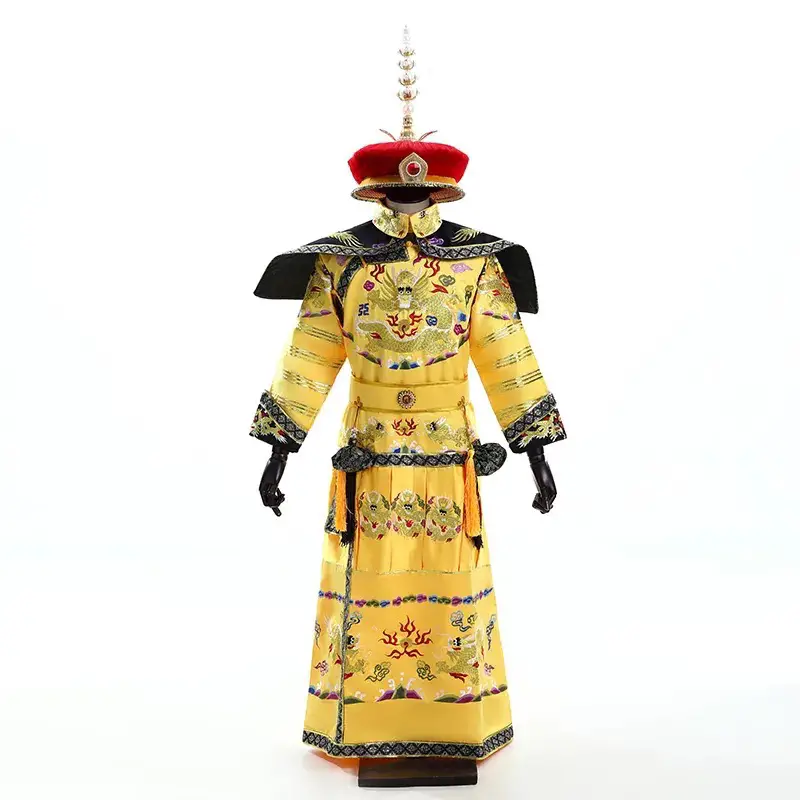
Chinese dragon origin
Dragons originated from snakes.
Eight thousand years ago, with abundant rainfall and lush vegetation, the world was a paradise for snakes, and humans had to constantly guard against them. As a result, people imagined a creature with a snake’s body, camel’s head, qilin’s horns, turtle’s eyes, ox’s ears, lizard’s legs, tiger’s claws, fish scales, and even whiskers—a dragon. Dragons were believed to possess incredible divine powers, capable of subduing all natural disasters and wild beasts.
Originating from thunderclaps
Dragons were initially associated with the twisting and turning image of lightning. Through observations of nature and celestial phenomena, ancient people believed that there existed a divine being in the heavens that could control winds, rain, and thunder, and appeared in the form of lightning. Based on the sound of thunder, they named this creature “dragon.” In terms of pronunciation, the Chinese word for dragon, “lóng,” captures the rumbling sound of thunder.
In weather conditions with dark clouds, whenever they witnessed gusts of wind, heard the rumbling of thunder, and even saw accompanying lightning, the ancient people knew that the dragon had arrived. The enigmatic nature of dragons both puzzled and frightened them, instilling a sense of awe. Thus, the worship of dragons began.
where are Chinese dragons from?
China has many origins of dragon culture, with legends originating from Fuxin, Liaoning, and Dongting Lake.
Ancient Tombs in Henan Province
The earliest appearance of dragons dates back 5,000 years ago in a primitive society’s tomb, currently displayed in the Museum of Puyang City, Henan Province. It is a dragon made of shells, with a rugged appearance resembling a lizard, lacking vibrant colors. Archaeologists refer to it as the “First Dragon of China.”
In ancient times, people couldn’t provide rational explanations for many natural phenomena. They hoped that their national totem possessed the powers of wind, rain, thunder, and lightning. They wanted it to resemble the majestic mountains, swim in water like fish, and soar in the sky like birds. Therefore, various animal features were concentrated in the dragon, such as the head of a camel, the neck of a snake, the antlers of a deer, the eyes of a turtle, the scales of a fish, the paws of a tiger, the claws of an eagle, and the ears of a cow. This composite structure signifies that the dragon is the king of beasts, an omnipotent creature, and a universal deity.
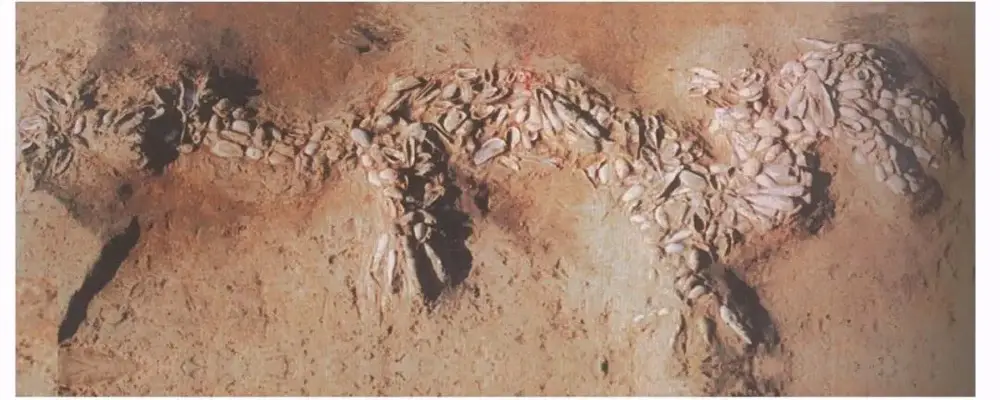
It’s important to note that dragons only have five fingers; any creature with four fingers is not a dragon but a lizard or crocodile-like animal.
As the totem of the Chinese ancestors, the dragon started as a rough and simple stone taken from the wild mountains. Throughout history, it was continuously shaped and refined by the elderly. The Shang and Zhou dynasties bestowed it with dignity, the Han and Tang dynasties with magnificence. During the Wei and Jin periods, it became like the Seven Sages of the Bamboo Grove, possessing an ethereal and scholarly aura. In the Liao and Jin dynasties, it resembled the wild horses of the grasslands, galloping without restraint. Emperors and nobles elevated it to the highest status, while common people embraced it in their local customs.
Shucheng County
Shucheng County is located in the middle-western part of Anhui Province, on the eastern foothills of the Dabie Mountains. It borders Lujian County to the east, Tongcheng City and Qianshan County to the south, Yuexi County and Huoshan County to the west, and Liuan City and Hefei City to the north. The total area of the county is 2,092 square kilometers, with a population of 1.02 million people (as of the end of 2010). It is one of the forefront areas for industrial transfer and a part of the Hefei Economic Circle.
Shucheng County is one of the origins of dragon culture in China and one of the thirteen places associated with the Liang Shanbo and Zhu Yingtai legend. The phrase “dragon-shu land” often mentioned refers to the Shucheng area.
According to legends in this small county town, the local people call themselves “descendants of the Dragon Shu.” It is said that in ancient times, there was a country called “Dragon Shu Marquisate” in this area, with its capital located at Longhekou in Shucheng County, Anhui Province.
In the first year of Yongping (58 AD), in the month of April, Emperor Ming conferred the title of Marquis of Dragon Shu to Xu Chang, the uncle of King Chu Liu Ying, granting him the counties of Shu and Dragon Shu. According to historical records, the “Dragon Shu Marquisate” was the first titled state in history to bear the word “dragon.” Longshu County (Marquisate) took its name from the ancient country of Shulong, recorded in the “Chinese Historical Atlas.” According to the “Zuo Zhuan,” in the twelfth year of Duke Wen, the “Shulong” rebelled against Chu and was later destroyed by Chu, becoming its vassal. It belonged to the Nine Rivers Commandery during the Qin dynasty.
During the reign of Emperor Gaozu of Han, in the fourth year, Shu County was established, and in the fifth year, Dragon Shu County was separated. According to the annotations of Du in the “Zuo Zhuan,” “Shu had Dragon Shu to the southwest. It was a marquisate in the Eastern Han dynasty, and the county was abolished during the Six Dynasties period.” Yao Nai stated that it was located north of present-day Huaining County, south of Tongcheng County.
According to the “Annals of Anhui Province: Historical Evolution,” the Dragon Shu City ruins are located at the present-day Longhekou in Shucheng County.
In the seventh year of Emperor Gaozu (200 BC), Liu Xin, the nephew of Emperor Gaozu, was titled the Marquis of Gengjie, governing Shu and Dragon Shu counties. Liu Xin built the Seven Gates Weir in his fiefdom, which became one of the important ancient water conservancy projects in our country.
The tomb of Liu Xin, commonly known as Shuwangdun, is located in the current Sihou Township on the north bank of the Fengle River in Feixi County (originally part of Shucheng County).
Fuxin, Liaoning Province
The “Dragon-shaped Mound Sculpture” unearthed from the Chahai Primitive Village Site in Fuxin, Liaoning Province, provides evidence for our “time positioning.” The Chahai site belongs to the “Hongshan Culture” remains, dating back approximately 8,000 years. The “Dragon-shaped Mound Sculpture” is located in the central square of this primitive village site and is constructed from equally-sized reddish-brown stones. The stone dragon is nearly 20 meters long, two meters wide, with an uplifted head, a curved back, and a tail that is partly visible. This stone dragon is the earliest and largest known dragon discovered in China to date. (There are claims of a fish-tailed deer dragon rock painting dating back 10,000 years on the Shizitan Cliff in Jixian County, Shanxi Province, but this rock painting hasn’t been published, so its exact appearance is unknown.) There are also pottery dragons with a history of 7-8,000 years unearthed from Xinglongwa in Inner Mongolia, as well as colorful pottery neck bottles with dragon patterns dating back 7,000 years unearthed from the Beishouling site in Baoji, Shaanxi Province, and a carved dragon from shellfish dating back over 6,400 years found in Xishuipo, Puyang, Henan Province.
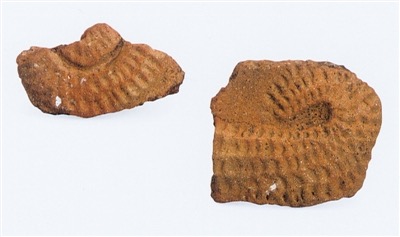
The process of the dragon’s vague collection started during the Neolithic Age and went through significant development from the Shang and Zhou periods to the Warring States period. It reached its basic form during the Qin and Han dynasties. The term “basic” has two meanings: first, the framework, elements, and style that constitute a dragon were essentially present during the Qin and Han dynasties; second, the dragon is an open and constantly evolving system. It did not remain content with its basic form during the Qin and Han dynasties, but continued to evolve and develop throughout subsequent dynasties until today.
Dongting Lake
Two thousand three hundred years ago, a poet and philosopher wandered along the shores of Dongting Lake. Sometimes he lowered his head and pondered, sometimes he looked up at the sky and exclaimed. In his exquisite poems, he poured out the doubts accumulated in his heart:
Who transmitted the knowledge of the ancient beginnings?
When the heavens and earth were not yet formed, what evidence can we rely on?
Day and night, water pervades, everything is in darkness.
Who can distinguish the limits?
The movement of the celestial bodies fills the void without form.
How can we recognize the heavens and earth?
Yu employed the Yinglong.
How were the rivers and seas connected?
How did the Yinglong use its tail to mark the earth?
The rivers flow into the ocean, what experiences did they undergo?
Sunlight reaches everywhere,
How can the candle-like dragon continue to shine?
The sun has not yet risen,
Why does the divine tree radiate light?
This scholar was Qu Yuan, a famous poet of the Spring and Autumn period.
The above poem is from his work “Questions to Heaven.” In the poem, Qu Yuan raises over a hundred questions, ranging from nature to society, from history to legends. He boldly expresses his doubts, and even the mythical creature “dragon” does not escape his keen observation. According to legend, during the time of Dayu’s flood control, an “Yinglong” (a winged dragon) used its tail to mark the earth, indicating the route to divert floodwaters. This is said to be the origin of the vast rivers and streams in later times.
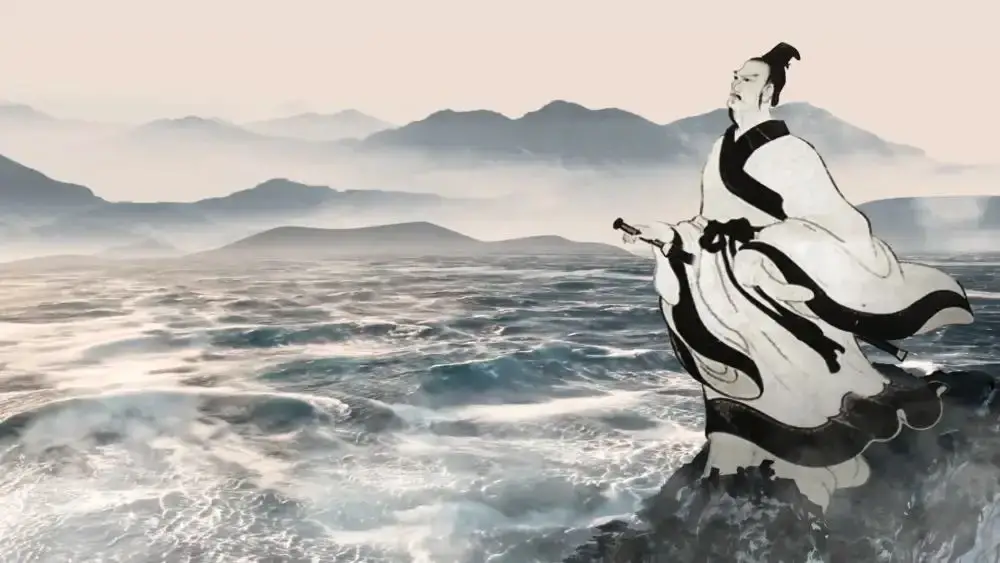
why Chinese emperor is called a dragon?
According to legends, there are two human ancestors in Chinese mythology: Fuxi and Nüwa. Fuxi is one of the Three Sovereigns and the cultural originator of the Chinese ethnic group. He is considered the divine protector of the state and the earliest recorded creator god in Chinese literature. Nüwa is the goddess of creation in ancient Chinese mythology and also holds the titles of cultural originator of the Chinese ethnic group and divine protector of the state. Both of these ancestral figures have a human head and a dragon or snake body, and they are collectively referred to as “Dragon Ancestors.”
In addition, there is a legend about the Emperor of Heaven appointing Gun to control flooding, but when Gun failed, he was killed. Gun’s corpse remained uncorrupted for three years. The Emperor was amazed and ordered Gun’s abdomen to be cut open, and a yellow dragon emerged, which transformed into Yu, the legendary founder of the Xia dynasty. Yu became the leader of the Xia tribe, and the dragon became their totem. The Records of the Grand Historian state that before the birth of Liu Bang, the mother dreamt of a divine visitation with thunder and lightning. Liu Bang’s father saw a dragon coiling around his mother’s body, and later, Liu Bang was conceived and born. Liu Bang declared himself emperor and proclaimed to be the true dragon emperor. Since then, the dragon became exclusively associated with feudal rulers.
Originally, the dragon was an object of worship for the early Chinese people, but as the level of autocracy increased and the power of the monarchs expanded, the dragon became appropriated by the imperial family due to their political advantage.
After being deified, the dragon became intertwined with the worship of emperors. During the Shang and Zhou dynasties, dragon patterns officially became the imperial emblem and symbol of power. At that time, the emperors of the Shang and Zhou dynasties flew the Nine-Dragon Flag and wore dragon robes for ancestral worship. During the Qin and Han dynasties, when China was unified, there was a need for a unifying deity that could integrate the beliefs of various regions and ethnic groups. The worship of the dragon further merged with the worship of emperors.
In ancient China, emperors proclaimed themselves as the incarnations of dragon gods or sons of dragon gods. They claimed to be protected by dragon gods and used the dragon symbol to establish authority and gain the trust and support of the people. In this way, the dragon acquired a more prominent status and played a crucial role in the development of Chinese dragon culture.
The Lüshi Chunqiu records the comparison of Duke Wen of Jin to a dragon, and later, there were claims that Qin Shi Huang was the “ancestor dragon.” After the Qin and Han dynasties, the dragon became firmly established as the embodiment of emperors and an exclusive symbol of the imperial family. The emperor was referred to as the “True Dragon Emperor,” their birth was described as the “Descent of the True Dragon,” and their passing was called “the Dragon Ascending to Heaven.” Their residence was the Dragon Court, their bed was the Dragon Bed, their seat was the Dragon Throne, and they wore Dragon Robes.
Chinese dragon culture
Dragons in various aspects of cultural life, including religion, politics, painting, literature, and folk festivals:
Dragons and Religion: Dragons are believed to have the ability to ascend to the heavens. During the Shang and Zhou dynasties, a flourishing period for bronze casting, the progress in decorative art accompanied the development of primitive religion. The dragon motif, as the controlling force and celestial being, had religious significance and evoked feelings of terror and mystery.
Dragons for rainmaking: As an ancient agricultural society, China’s crops and people’s livelihoods were directly influenced by weather conditions. Rainmaking rituals, including dragon-related practices, were an essential part of ancient witchcraft.
Establishment of Dragon Gods: In traditional Chinese religious beliefs, dragons have always been regarded as celestial beings that control the heavens and rainfall. The transformation of dragons into deities and their appointment as Dragon Kings can be attributed to the influence of Buddhism and the association with Taoism. The emergence of Dragon Kings in history reflects the aspirations of the common people to protect their rights and pursue a better life. However, Dragon Kings were ultimately products of ignorance and backwardness and were eventually abandoned by the enlightened populace.
Dragons and Politics: The representation of dragons, particularly through dragon motifs in ancient Chinese art, gradually developed during the pre-Qin period, benefiting from the unification of the Western Zhou dynasty and the conflicts of the Spring and Autumn and Warring States periods. The Qin dynasty’s complete unification of the six states further promoted the development of dragon motifs. Dragons in this era still possessed their religious symbolism as celestial beings, but their secular significance as auspicious creatures became increasingly important. People hoped for the protection and blessings of these divine creatures. The dragon motifs of the Qin and Han dynasties already exhibited a significant secularization, and the dragon was no longer associated with the terrifying image of the Shang and Zhou periods. With the deep-rooted belief in the divine right of kings in ancient Chinese society, the concept of the Son of Heaven and dragon lineage gradually gained social acceptance. Emperors proclaimed themselves as the embodiment of dragons, identifying themselves as the heavenly beings sent to maintain order on Earth. Thus, the concept of the true dragon emperor emerged in later periods.
In the class society that followed, rulers continued to exploit the idea of totem worship to maintain their rule. They proclaimed themselves as the reincarnation of dragons, acting as the intermediaries between heaven and earth. Starting from the 2nd century, the dragon became a symbol of emperors and power. Dragon motifs adorned imperial regalia, clothing, and furniture, effectively monopolizing the image of the dragon. The general population, enticed or coerced by the power, had no choice but to recognize the rulers as the reincarnation of dragons and accept their rule, sometimes even believing that they might have a connection with dragons themselves, as depicted in idioms like “the carp leaping over the Dragon Gate.”
Dragons in Painting: The earliest known expert in painting dragons in Chinese history was Cao Buxing from the Eastern Wu during the Three Kingdoms period. According to the evaluation by Xie He, a scholar from the Southern Dynasty, “In the secret chamber, there is only one dragon. Its style is not merely an empty creation.” Later, the renowned Eastern Jin painter Gu Kaizhi included the image of a dragon in his masterpiece “The Nymph of the Luo River.” Notably, during the Southern and Northern Dynasties, Zhang Sengyao became the most legendary dragon painter in Chinese history. He painted dragons in Anle Temple in Jinling, giving rise to the idiom “adding the finishing touch by painting a dragon.” Skilled dragon painters emerged in various dynasties throughout history, and the dragon’s image has been perpetuated in Chinese painting.
Dragons in Literature: Dragons held a certain position in ancient religious and political beliefs, and dragon motifs were popular in daily life, making them a common subject in literature. In the earliest collection of poems, the “Book of Songs,” dragon imagery primarily appeared in relation to Zhou kings, feudal lords, and ceremonial rituals, seemingly distant from the people’s daily lives. In the “Chu Ci” (Songs of Chu) from the Warring States period, poets often likened themselves to divine dragons to express their noble character, ambitious political aspirations, and frustrations. In later literary works such as “The Investiture of the Gods,” “Journey to the West,” and “Strange Tales from a Chinese Studio,” the dragon’s image became more diverse and elaborate. The majestic and powerful appearance, divine and mystical characteristics, and complex background of dragons inspired the imagination of writers, enriching Chinese literature.
Dragons in Folk Festivals: Chinese folk festivals include several celebrations related to dragons. These festivals feature a variety of colorful activities with a strong ethnic flavor and a sense of rustic charm. The Lantern Festival, also known as the Yuanxiao Festival, held on the fifteenth day of the lunar month, involves dragon lantern dances. The Dragon-Head-Raising Festival, held on the second day of the second lunar month, is believed to be the day when hibernating dragons awaken. The Dragon Boat Festival, celebrated on the fifth day of the fifth lunar month, includes dragon boat races as an essential part of the festivities. Dragons add vibrancy to Chinese folk festivals, bringing hope and joy to people’s lives.
The Chinese dragon serves as a totem of the Chinese nation and a symbol of Chinese culture. Ancient people believed that there must be a powerful “divine creature” associated with water, governing and manipulating animals and natural phenomena. Thus, dragons began their “ambiguous collection” as an object of worship and a way to comprehend the inexplicable forces of nature. Over thousands of years of history, the dragon has become an integral part of Chinese culture. It represents the profound cultural heritage of the Chinese nation and possesses significant research value.
dragon in Chinese mythology
Given that the population of dragons is prosperous and they are fierce and terrifying, posing a constant threat to other animals and humans, associations and similar connections arising from dreams or conditioned reflexes naturally come into play. Therefore, the “Records of the Three Sovereigns” states, “The Flame Emperor, the Divine Farmer, of the Jiang surname, whose mother was Nuwa’s daughter, became the concubine of Shaohao and gave birth to the Flame Emperor by being impregnated by a divine dragon.” The “Huainanzi? Examining the Netherworld” states, “In ancient times, the Four Extremities were ruined, the Nine Continents were split, the sky did not cover all, and the earth was not all-encompassing. Fires burned fiercely without extinguishing, waters surged without subsiding, fierce beasts devoured the people, and predatory birds seized the weak and old. At that time, Nüwa smelted the Five Colored Stones to repair the heavens, cut off the legs of the giant turtle to establish the Four Extremities, killed the Black Dragon to save Jizhou, and piled up reed ash to stop the flooding.” Due to the high temperature period that occurred during the Late Pleistocene, there were primitive forest wildfires that burned fiercely without extinguishing, and due to glacier melting and rising sea levels, there was a persistent invasion of the vast ocean for thousands of years. Humanity was in a period of great challenges, and it coincided with the era of dragon dominance and hegemony over water. “Killing the Black Dragon to save Jizhou” thus became a wish and a necessary measure for human survival and competition. Hence, the legend of the Dragon Year being inauspicious and bringing calamities persists to this day.
In the “Classic of Mountains and Seas: Classic of the Great Wilderness in the North,” it is said, “Chiyou raised an army and attacked the Yellow Emperor, commanding the Yinglong to attack the fields of Jizhou. The Yinglong stored water, and Chiyou requested the Wind Earl and Rain Master, causing a great storm. The Yellow Emperor then summoned the celestial maiden Ba to stop the rain, and subsequently killed Chiyou.” This passage not only reflects the intimidating nature of dragons but also demonstrates how feudal rulers used people’s fears and worship to deify dragons and emperors.
Since the ancestors of the Huangdi clan group also revered dragons as their totem, the “Records of the Grand Historian: Book of the Celestial Officials” states, “Xuanyuan was of the Huang Dragon lineage,” thus further integrating the emperor and the dragon, enhancing the emperor’s majesty.
Afterwards, the deification of dragons and emperors as a single entity became more prevalent. For instance, the “Records of the Grand Historian: Annals of Gaozu” states, “Gaozu had a dignified and dragon-like appearance,” and the “Classic of Mountains and Seas: Inner Classic of the Sea” cites the “Kai Shi” commentary, which says, “After Gun died, for three years, he remained inseparable. His body was split open with a Wu knife and transformed into a yellow dragon.” The “Collected Accounts” states, “Yu exerted all his efforts to dig canals, guiding rivers and controlling mountains, with a yellow dragon dragging its tail in front and a black turtle carrying mud behind.”
In Volume Five of the “Records of Strange Stories,” it is written, “The palace of the Sea Dragon King… the sea water around it is turbid, but the water here is clear. Even without wind, the waves are several Zhang high, and boats dare not venture forward… In the middle of the night, from a distance, red light shines like the sun, stretching hundreds of Li and connecting with the sky. It is said that the palace of the Dragon King is located here.” Here, the primitive myth is combined with reality, forming a new secondary myth. From the Tang Dynasty onwards, the mythology of dragons merged with novels, giving rise to mythological novels. The concept of dragons also permeated broader aspects of life and folk culture. For example, in the Tang Dynasty, Li Wei’s novel “Liuyi” tells the story of Liuyi delivering a letter to the Dragon Princess. Based on this story, the later works “Lingying Zhuan” from the end of the Tang Dynasty, “Yiluji,” “Xu Xuanguailu,” and “Boyizhi” from the Five Dynasties period, all developed similar mythological stories. In the Northern Song Dynasty, Li Fang and others compiled the “Extensive Records of the Taiping Era,” which mentions in Volume 418 the story of “Liang Sigong Ji,” saying, “In Zhenshe Lake, to the south of Dongting Mountain, there is a cave called Liudu, which is over a hundred feet deep… it is said to be the residence of the Seventh Daughter of the Dragon King of the Eastern Sea, who hides the Dragon Pearl. Numerous small dragons guard this pearl.” Thus, the title of Dragon King began to appear in ancient texts.
Perhaps inspired by stories like “Liuyi” and “Taiping Guangji,” Wu Cheng’en’s “Journey to the West” during the Ming Dynasty further developed the narrative. It includes episodes such as Sun Wukong causing chaos in the East Sea, where Dragon King Ao Guang is forced to surrender the Needle of the Sea’s Depth (Ruyi Jingu Bang); Wei Zheng dreaming of beheading the Dragon King of Jinghe; and the Dragon King of the Kingdom of Jiesai stealing the relic. The “Investiture of the Gods” mentions Nezha causing trouble in the sea, killing the young Dragon King Ao Bing and extracting dragon tendons to make a belt, as well as defeating the old Dragon King Ao Guang and plucking his dragon scales. This revolutionary transformation of significant historical importance displays contempt for the dragon, which symbolizes imperial authority, and essentially discredits and belittles feudal emperors. Consequently, dragons were further classified into benevolent and malevolent categories, reflecting the desires and grievances of the masses.

dragon pangu
Pangu is a mythical figure from Chinese legends. It is said that Pangu himself is a dragon. With the head of a dragon and the body of a snake, he gradually exhaled, creating the wind and rain, and blew out his breath, causing thunder and lightning. When he opened his eyes, it became daytime, and when he closed his eyes, it became nighttime.
After Pangu’s death, his bones transformed into mountains and forests, his body became rivers and seas, and his blood formed the rivers and valleys. His hair and fur turned into vegetation.
According to the legend, there were three heavenly dragons: a black dragon, a white dragon, and a yellow dragon. These nine dragons took turns incubating two dragon eggs. When the eggs hatched after 18,000 years, a divine being with horns on its head and wielding a giant axe emerged, known as Pangu. The older dragons were surprised by his different appearance, and one of them swished its tail, sending Pangu flying to the ground. Feeling stifled in the dim and chaotic surroundings, Pangu swung his axe and started cutting. As he chopped away, the clear Qi rose to the heavens, and the impure substances fell to the ground. The separation of the clear and turbid created a distinct and orderly world, which is the origin of Pangu’s act of separating the heavens and the earth.
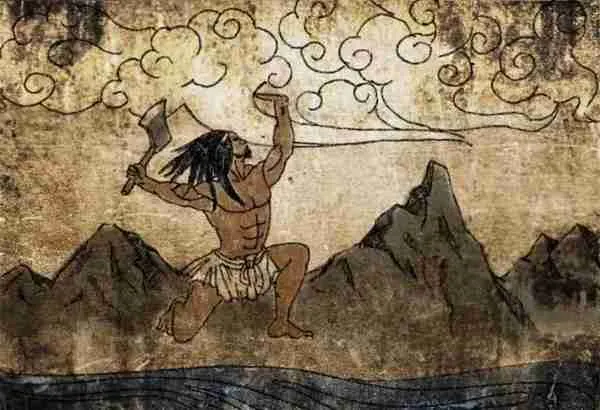
Legend of Dragon Emperor and Heaven Emperor
The Dragon Emperor, also known as the Heavenly Emperor or the Jade Emperor, is believed to be the incarnation of Huangdi, the ancestral figure of the Chinese nation. According to the “Book of Enfeoffment” in the “Records of the Grand Historian,” Huangdi and the common people were mining copper ore in Shoushan (the First Mountain). They cast the extracted copper into a large bronze tripod and placed it at the foot of Jingshan (the Sacred Mountain). As the bronze tripod was being cast, a dragon with a long beard appeared to welcome Huangdi ascending to heaven.
Huangdi rode on the back of the dragon, and his ministers, as well as his wife and children, also climbed up one after another, totaling more than seventy people. However, there were still lower-ranking officials who couldn’t climb up and could only grab onto the dragon’s beard. Unable to bear the weight, the dragon’s beard broke, and the bow that Huangdi carried was also pulled down. The remaining officials could only hold onto the broken beard and the fallen bow, weeping in sorrow. After ascending to heaven, Huangdi became the Heavenly Emperor.
The Yellow Dragon is the Dragon Emperor, associated with the element of Earth and positioned in the center. It is the leader of the dragon clan and the ruler of the Heavenly Court in Taoist religious beliefs. Ancient texts from the Han Dynasty also mention: “The Yellow Dragon is the noblest of the four directions, the embodiment of divine spirits. It can be massive, subtle, hidden, bright, short, and long. It can appear and disappear. When a king possesses virtue and wisdom without meddling in the trivial, the Yellow Dragon responds with harmony and roams in ponds and lakes.” This description illustrates the image of the Yellow Dragon.
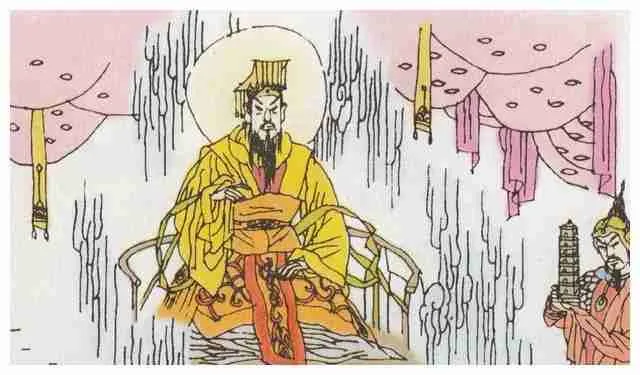
what does the Chinese dragon dance represent?
The symbolism of dragon dance primarily includes dispelling disasters, bringing good fortune, praying for rain, and celebrating bountiful harvests. The dragon is the totem of the Chinese nation, representing a spirit, a pursuit, a longing, and a blessing. Therefore, it can be said that dragon dance symbolizes the hardworking, brave, persevering, resilient, and enterprising spirit of the Chinese people.
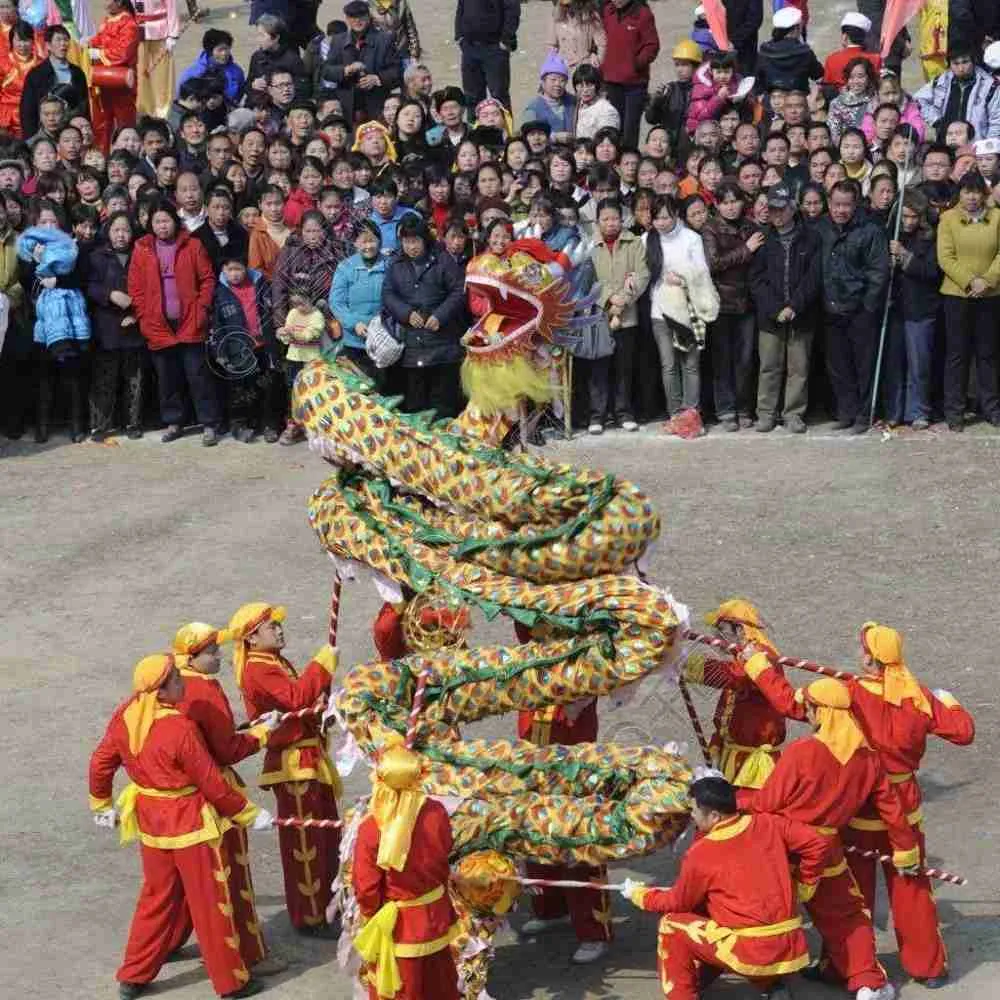
son of Chinese dragon
During the Ming Dynasty, people associated the dragon with a prosperous family. In the evolution of its image, the dragon originated from a fusion of various grotesque animal forms. However, not all bizarre animal images merged into the dragon; alongside the formation and development of the dragon image, some peculiar animal forms also evolved and incorporated certain characteristics of the dragon. As a result, some people connected the two. In folklore, there has long been a belief in the dragon having nine offspring, but there is no precise record of what these nine offspring are. However, this curiosity of the “true dragon emperor” led to an outcome. It is said that during an early morning court session, Ming Xiaozong Zhu Youlang suddenly became curious and asked Li Dongyang, a renowned scholar and Minister of Rites, who also served as the Grand Secretary of the Imperial Academy, “I have heard about the dragon having nine offspring, but what are the names of these nine offspring?” Caught off guard, Li Dongyang could not provide an immediate answer. After the court session, he pondered and consulted several colleagues, combining folk legends and piecing together information until he finally produced a list, which he presented to the emperor. According to Li Dongyang’s list, the nine offspring of the dragon are:
Pafu: Fond of water, depicted as a carved beast on bridge columns.
Chaofeng: Adventurous in nature, represented by statues placed at the corners of palaces.
Yazhi: Inclined towards violence, with its form resembling a beast carved on the hilt of a knife.
Bi Xi: Strong and capable of carrying heavy objects on its back, as seen in stone turtles placed under stone tablets.
Jiaotu: Shaped like a conch shell and inclined to remain closed, often depicted with a necklace in its mouth.
Chiwen: Known for its appetite, represented by the beast head on the ridges of palaces.
Pudao: Fond of making noise, its head is used as the handle of large bells.
Suanni: Likes to crouch and sit, depicted as a lion-like creature under Buddhist statues.
Qiuniu: Fond of music, its form is carved on the upper end of the qin (a Chinese musical instrument) peg.
The concept of the dragon having nine offspring does not mean that dragons actually have precisely nine offspring. In traditional Chinese culture, the number nine is often used to signify abundance and holds a supreme position. Nine is a symbolic number, representing great significance, hence its use to describe the dragon’s offspring.
double dragon play ball
The Double Dragon Playing with the Pearl is a representation of two dragons frolicking or contending for a fiery pearl. Its origin can be traced back to the astronomical diagrams of planetary movements in Chinese astronomy, where the pearl evolved from the moon. Starting from the Western Han Dynasty, the Double Dragon Playing with the Pearl became a decorative motif associated with auspiciousness and celebration. It was often used in architectural paintings and adorned luxurious vessels.
The configuration of the Double Dragon depends on the area of decoration. If it is in a rectangular shape, the two dragons are symmetrically positioned on the left and right sides, appearing in a rowing posture. If it is in a square or circular shape, the two dragons are arranged diagonally, with one ascending and the other descending. Regardless of the arrangement, the fiery pearl is always in the middle, displaying a lively and dynamic momentum.
The Double Dragon Playing with the Pearl has a history dating back to the Pre-Qin period, spanning over three thousand years. In ancient Chinese mythology, the dragon pearl is considered the essence of dragons and the source of their cultivation. Therefore, in artistic expression, the competition between two dragons for the jade pearl symbolizes people’s pursuit of a better life.
According to legend, there was a deep pool in Tianchi Mountain where two green dragons practiced their cultivation. They were concerned about the well-being of the nearby people and frequently brought rain and wind to ensure a peaceful and prosperous life for them. The two dragons were beloved by the people. Tianchi was also the bathing place for heavenly maidens. Whenever the moon was shining brightly, the heavenly maidens would come here to bathe and frolic. Once, while the heavenly maidens were joyfully bathing in the pool, a hairy monster suddenly appeared and harassed them. They called for help, and upon hearing their cries, the two green dragons immediately donned armor and rushed to Tianchi. They saw a monstrous bear creating havoc, and the two dragons bravely fought together, ultimately defeating and capturing the bear monster.
The heavenly maidens informed the Jade Emperor of the rescue performed by the green dragons. Touched by their benevolent and righteous actions, the Jade Emperor took out a golden pearl from a gourd and presented it to the green dragons, urging them to continue their cultivation successfully. With only one golden pearl, neither dragon wanted to swallow it alone, so they passed it back and forth, resulting in a lively spectacle of shimmering golden light. Over time, this matter attracted the attention of the Jade Emperor, who dispatched the planet Venus to investigate.
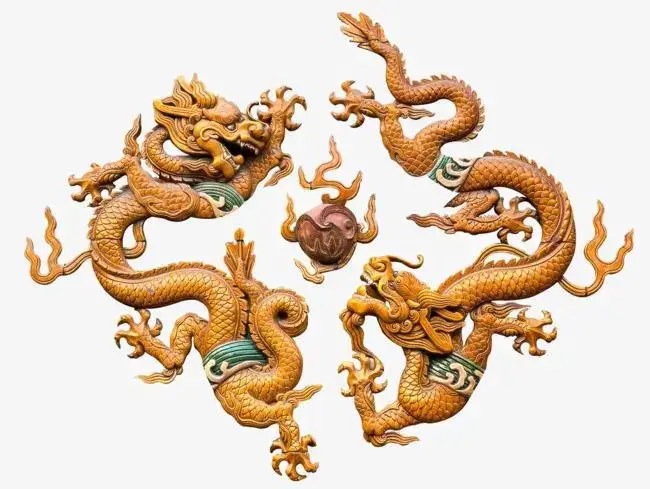
After inspecting the situation, Venus observed the diligent cultivation, kind-heartedness, and loyalty of the two green dragons. He reported this to the Jade Emperor, who was also moved by their virtues. Consequently, the Jade Emperor presented another golden pearl to each dragon. They each swallowed a pearl and became celestial gods in charge of human destiny.
The common people, who never forgot the benevolence of the green dragons and admired their virtues, built temples to worship them throughout the four seasons. Over time, from the worship of the dragons, to the entertainment of dragon dances, and the transformation into auspicious and joyous dragon paintings, the Double Dragon Playing with the Pearl became a prevalent motif. The dragon dance and the painted pattern often portray the dragons in a rowing posture, depicting the ascending and descending movements and the exchange of the golden pearl between the two dragons. The motif of the Double Dragon Playing with the Pearl can be found in murals, dyeing and weaving, embroidery, carving, and other decorative crafts, making it a common sight in daily life.
The artistic form of the Double Dragon Playing with the Pearl, originating from folklore, carries the beautiful wishes of celebration, abundance, and auspiciousness.
Dragon Whisker Bead
The Dragon Whisker Bead, also known as Longxu Bead, is a auspicious ornament worn by ancient people that combines dragon whiskers and dragon pearls. Both the dragon whisker and dragon pearl have auspicious meanings, and the combination of the two in the Dragon Whisker Bead carries a deeper symbolism.
Dragon Whisker: According to the “Book of Enfeoffment” in the “Records of the Grand Historian,” the Dragon Emperor, also known as the Heavenly Emperor or the Jade Emperor, is believed to be the incarnation of Huangdi, the ancestral figure of the Chinese nation. When Huangdi ascended to heaven, a dragon with a long beard appeared to welcome him. Huangdi rode on the dragon’s back, and his ministers, along with his wife and children, also climbed up, totaling more than seventy people. As the dragon ascended to heaven, the remaining people grabbed onto the dragon’s beard, causing it to break under the weight. Half of the broken dragon whisker remained in the mortal realm. It is believed that dragon whisker-shaped ornaments have spirituality and can bless family members with safety, health, academic success, and career achievements.
Dragon Pearl: The Dragon Pearl refers to a pearl, which is produced in water and possesses a beautiful luster and form. Dragons are often depicted as the rulers of water in many legends and records. Therefore, people consider pearls to be dragon pearls. Pearls have been cherished and worn by people throughout history. In Chinese culture, pearls have been used medicinally for over 2,000 years. They are mentioned for their therapeutic effects in ancient medical books such as the “Records of Famous Physicians” from the Three Kingdoms period and the “Compendium of Materia Medica” from the Ming Dynasty. Modern medicine also acknowledges the calming, cooling, nourishing, eyesight-improving, and detoxifying properties of pearls.
Combination of Dragon Whisker and Dragon Pearl: The combination of dragon whisker and dragon pearl in the Dragon Whisker Bead carries a deeper meaning. While the dragon whisker brings auspicious blessings, according to folklore, it possesses spirituality and longs to return to the dragon’s body, taking away the auspicious blessings. On the other hand, dragons are known to be fond of dragon pearls. The purpose of the dragon pearl is to anchor the dragon whisker, keeping it in the mortal realm and preserving the auspicious blessings.
The Dragon Whisker Bead is not merely a product of feudal superstition. Like the dragon itself, it symbolizes the spirit of the Chinese nation and serves as a spiritual sustenance in people’s lives, reflecting the historical and cultural heritage of the Chinese people.
An increasing number of students and young people are paying attention to traditional Chinese culture. Although the Dragon Whisker Bead is an auspicious ornament worn by ancient people, its combination of whisker and pearl embodies a classic and fashionable design, coupled with its auspicious cultural significance, making it increasingly popular among people.
why do Chinese descendants of dragons?
Firstly, the dragon is a highly significant symbol and emblem in traditional Chinese culture, regarded as a sacred and auspicious symbol. In Chinese tradition, the dragon is considered the highest of animals, representing power, authority, and nobility. Therefore, calling oneself a “descendant of the dragon” implies a noble status and symbol of honor.
Secondly, the dragon has a long heritage and cultural legacy in Chinese history, dating back thousands of years. The dragon is extensively employed in various realms of Chinese culture, such as art, architecture, clothing, and cuisine, making it an essential component of Chinese culture. Thus, identifying as a “descendant of the dragon” also signifies pride and identification with Chinese culture and history.
Furthermore, identifying as a “descendant of the dragon” also represents reverence and respect for one’s ancestors. In ancient China, the dragon was considered a guardian deity and a bridge between heaven and earth, representing ancestral figures. Therefore, calling oneself a “descendant of the dragon” is also a commemoration and tribute to one’s ancestors.
In conclusion, the Chinese self-identification as “descendants of the dragon” is based on multiple reasons. This appellation signifies reverence and respect for the dragon, pride and identification with Chinese culture and history, as well as commemoration and respect for one’s ancestors.
Dragon Feng Shui
Dragons are mythical creatures with long bodies, scales, deer-like horns, claws, and the ability to fly in the air and swim in water. They are considered highly revered and symbolize authority and auspiciousness in Chinese culture. From the perspective of Feng Shui, dragons are part of the Four Divine Creatures (Dragon, Phoenix, Tortoise, and Qilin) in ancient China, with the dragon representing transformation, the phoenix representing order, the tortoise representing signs of good or bad fortune, and the qilin representing benevolence. As the leader among the Four Divine Creatures, the dragon has significant Feng Shui effects, including warding off negative energies, enhancing prosperity, attracting auspiciousness, and strengthening power.
Feng Shui Effects of Dragons
- Enhancing Wealth Luck
Placing a dragon above or on the sides of a fish tank in your home can enhance wealth luck. For optimal results, you can also place dragon-shaped ornaments in the owner’s wealth sector or the true north direction of the house.
- Warding Off Evil Spirits
Dragons symbolize authority and power, making them effective in warding off evil spirits. If you feel that your household’s luck is not prosperous or notice unusual occurrences, placing auspicious dragon decorations in favorable directions can dispel negative energies and ensure a flourishing home.
- Resolving Negative Energies
Dragons exude a regal aura and have a strong influence on impurities, yin energies, and dark forces. Placing Feng Shui dragons in your home can effectively resolve negative energies in areas near places with strong killing energies, such as slaughterhouses, cemeteries, funeral parlors, or in proximity to police stations, military bases, or prisons. Additionally, if there are buildings nearby with a strong solitary or oppressive atmosphere, such as temples or monasteries, placing a pair of Feng Shui dragons can help alleviate such influences. However, they are not suitable for piercing or road-killing energies.
- Balancing the White Tiger Position
If the White Tiger position is imbalanced, placing auspicious dragon ornaments on the Azure Dragon position can counteract the negative effects and prevent it from causing disturbances. For individuals such as company CEOs or private business owners who sense unusual activities or potential harm from subordinates, placing dragon-shaped mascots on the Azure Dragon position of their office desk is beneficial. If your house is compared to surrounding buildings and leans higher on the right side, placing a dragon-shaped auspicious item on the Azure Dragon position at home can help balance the energy. In cases where there is construction activity in the west-facing White Tiger position of your home during an unlucky year, placing a dragon-shaped auspicious item on the Azure Dragon position can be advantageous.
- Suppressing Enemies and Enhancing Mentor Luck
For those in the salaried class or working in government institutions, having adversaries or office politics can be detrimental. Dragons can mitigate conflicts and enhance mentor luck. If you find yourself surrounded by enemies and experiencing conflicts, placing a dragon-shaped auspicious item on the left side of your office desk (Azure Dragon position) can elevate your mentor luck and suppress negative influences, promoting career advancement and business development.
- Boosting Yang Energy
When there are fewer male members in the household or a lack of vitality and prosperity, you can use auspicious dragon ornaments in favorable positions to gather yang energy and enhance masculine qualities.
Materials and Sizes
Choosing the right materials for Feng Shui dragons is crucial, as dragons are regarded as noble and possess the ability to bring good fortune. It is advisable to select materials such as gold, bronze, jade, or ceramic to exude a sense of nobility. Furthermore, the depiction of dragons should convey a sense of dynamism and vitality, as stiffness and lack of movement will hinder their ability to manifest their dynamic energy. It is important to avoid a snake-like appearance.
Arrangement of Dragons
Dragons should be placed in harmony with water, as dragons thrive in water. Placing dragon decorations in areas without water, especially dry areas, may carry negative connotations such as “a dragon swimming in shallow water being toyed with by shrimp.” Therefore, it is advisable to place dragon-shaped ornaments in areas with water, preferably on both sides of a fish tank, to achieve optimal results.
The north direction is associated with abundant water energy, and dragons have an affinity for water. Therefore, placing Feng Shui dragons in the true north direction of your home is most suitable. Additionally, placing dragons on the left side is also favorable since, according to the Five Directions theory, the Azure Dragon represents the left side, and the White Tiger represents the right side.
If your house faces a river or the sea, you can use a pair of gray or black stone dragons placed on the windowsill or balcony railing, with their heads facing the ocean or river. This arrangement signifies the dragons venturing out to the sea, enhancing wealth luck. However, if the house faces a smelly drain or similar unpleasant surroundings, it is not advisable.
Precautions
When arranging dragon-shaped auspicious items, there are a few considerations to keep in mind:
- Avoid placing dragons facing bedrooms
While dragons are auspicious mythical creatures, their fierce appearance makes it unsuitable to face them towards bedrooms, especially if there are intimidating or aggressive-looking dragons. This arrangement is particularly unfavorable for children’s rooms.
- Avoid oversized dragons
If there is no water inside or outside the house, and you plan to place Feng Shui dragons with a fish tank, it is important to consider appropriate sizes. Placing oversized dragons on the walls of the fish tank can result in financial losses or unexpected disasters. Therefore, maintaining a proportional size between the Feng Shui dragons and the fish tank is crucial.
- Not recommended for those born in the Year of the Dog
From a zodiac perspective, the Dog clashes with the Dragon, so individuals born in the Year of the Dog are not advised to display dragon-shaped auspicious items, as it may bring them unfavorable effects.
- Pay attention to the number
The number of dragon decorations also holds significance. It is recommended to have one, two, or nine dragons. However, if there is a painting or artwork with nine dragons, it should have a central dragon as the main focus. Without a central dragon, it can create a chaotic atmosphere, leading to disputes and an unsettled home environment.
dragons and Buddhism
The relationship between dragons and Buddhism in China is complex. In the indigenous dragon worship in China, there was originally no worship of “dragon kings.” The worship of dragon kings was introduced after the spread of Buddhism. Prior to the Han Dynasty, there were only dragon deities and no “dragon kings.” However, after the Sui and Tang Dynasties, with the introduction of Buddhist beliefs, the worship of dragon kings became widespread in China. Scholars generally believe that the belief in dragon kings and dragon palaces originated in India and was introduced along with the spread of Buddhism. The long-lasting continuation of dragon culture in China can be attributed not only to the Confucian and Taoist traditions that fully inherited and promoted the belief in dragons as symbols of power and authority but also to the influence of the Buddhist concepts of “dragon palaces” and “dragon kings.”
In Buddhist scriptures, dragon kings are mentioned in various forms. For example, in the Lotus Sutra, there are references to eight dragon kings: Nanda Dragon King, Vedaśrī Dragon King, Sāgara Dragon King, Dhṛtividyut Dragon King, Sudarśana Dragon King, Anavatapta Dragon King, Mahānaṣa Dragon King, and Utpalaka Dragon King.
Did the indigenous dragon worship in China influence the worship of dragon kings in Buddhism, or did Buddhism influence the indigenous dragon worship? The relationship between the two is not entirely clear, but there are indications that the concept of dragons in Indian Buddhism was influenced by China and underwent further transformation to become “dragon kings.” As Buddhism spread eastward, the worship of dragon kings also spread to China. There are several reasons for this:
- Dragon worship has a long history in Chinese culture. Archaeological discoveries have revealed dragon depictions dating back thousands of years, such as the Longwangwa dragon sculpture found at the Cha’ahai site in Fuxin, Liaoning Province, which dates back approximately 7,000-8,000 years. Dragon worship was prevalent in China long before the earliest archaeological evidence of dragons in India.
- The earliest archaeological evidence of dragons in India, such as the paintings “Dragon Kings and Their Families” from the 1st century BCE and “Dragon Clan Worshiping the Bodhi Tree” from around the turn of the era, is more recent compared to the early dragon depictions found in China.
- In terms of written records, the earliest known Indian textual references to dragons are found in the works of the Buddhist philosopher Nagarjuna, who lived around the 2nd century CE. In contrast, Chinese records related to dragons predate those in India by a considerable margin. Dragon-related inscriptions and records can be found in oracle bones from the Shang Dynasty (around 3500 years ago), indicating the widespread worship of dragons in China.
- After the formation of Chinese dragon culture, it not only spread rapidly within the country but also quickly spread to other regions. The concept of dragons in Indian Buddhism likely originated from China. There were two possible transmission routes: one was through Tibet, as archaeological evidence suggests that cultural exchange between the Yellow River Basin and Tibet and its southern regions occurred as early as the Neolithic period. The transmission of dragon culture from China to Tibet and then to India is entirely plausible. The other transmission route was through the Silk Road in the Western Regions. The Central Plains dynasties had contact with the Western Regions over 3,000 years ago, and it is said that migrants from the Zhou Dynasty had already reached regions east of the Pamirs. After the fall of the Shang Dynasty, some Xia people migrated to northwestern regions, reaching Gansu and continuing westward to the Yarkand region in the Western Regions. The Dragon clan tribes that migrated to Yarkand became the ruling class of the Yarkand Kingdom during the Jin Dynasty, and they had the surname “Long” (龙). It is certain that they brought their dragon culture with them into the Western Regions.
- Ancient India did not originally have the concept of dragons. There is no dedicated word for “dragon” in the Sanskrit language; it was combined with the word for “elephant” to represent a dragon. After the introduction of Chinese dragons into India, dragon deities quickly replaced the deity Indra and became the dominant gods associated with storms and lightning. As a result, the word originally used for “elephant” came to represent “dragon” as well.
- In the “Records of the Western Regions” (also known as “Great Tang Records on the Western Regions”), there are about 20 dragon legends mentioned, with five from the Western Regions, five from northern India, and ten from central India. However, there is no mention of any dragon legends from southern India. The dragon legends from Kucha and Khotan in the Western Regions are similar to ancient Chinese dragon legends, including stories of riding dragons and dragons mating with women to produce dragon offspring. These legends are unrelated to Buddhism. On the other hand, the dragon myths and legends from the regions south of the Ganges mentioned in the “Records of the Western Regions” are connected to Buddhist figures. This suggests that the transmission of Chinese dragon culture to India likely occurred through the Western Regions.
- Both the original Chinese dragons and dragons in Indian Buddhism have close associations with serpents. In Buddhist art, the dragon kings are often depicted with an expanded cobra-like hood behind their heads. Additionally, Buddhist scriptures often describe dragons in terms of their serpent-like attributes. This connection between dragons and serpents is shared between Chinese and Indian dragon lore.
Based on these reasons, it is reasonable to conclude that the concept of dragon kings in Indian Buddhism was influenced by China and that the introduction of Buddhism into China further contributed to the development and dissemination of dragon worship.
The differences between dragons in Chinese culture and dragons in Indian Buddhism can be summarized as follows:
Social Status: The most significant difference between Chinese dragons and Indian dragons lies in their social status. In animal worship, dragons hold the highest position. Particularly after the fusion of dragon worship with politics, dragons became symbols of emperors, representing inviolable divine beings. On the other hand, in Indian Buddhism, dragons are considered ordinary deities. For example, the “Dragon” in the Eight Great Dragon Kings mentioned in Buddhist scriptures is simply a common protective deity and does not possess a supreme status. In Indian animal worship, the Garuda bird receives the highest reverence, while dragons are often depicted as prey for the Garuda bird. In Buddhist scriptures, one of the “three disasters” for dragons is being consumed by the Garuda bird. This indicates that the status of dragons in India is lower than that of the Garuda bird, whereas in China, dragons hold a higher status compared to phoenixes.
Attributes and Abilities: In ancient Chinese legends, dragons have the ability to ascend to the heavens and descend to the earth, acting as intermediaries between the celestial and human realms. They can be ridden by immortals and freely traverse between heaven and earth. For instance, the Yellow Emperor ascended to heaven riding a dragon, and other legendary figures like Zhuanxu, Emperor Ku, and Qi also rode dragons for their travels. In Indian Buddhism, dragons lack this divine nature. The deities typically ride the Garuda bird, such as the Vedic deity Vishnu often depicted riding a Garuda bird. In Buddhist iconography, Manjushri Bodhisattva is depicted riding a lion or sitting on a white lotus throne, while Samantabhadra Bodhisattva is depicted riding a six-tusked white elephant or sitting on a blue lotus throne.
Regional Variation: Prior to the introduction of dragon king worship in Indian Buddhism, Chinese dragons did not have a regional specificity. Dragons were revered as rain-bringing deities and were worshipped by various ethnic groups across different regions. The dragon’s image was generally consistent, with only variations in color, such as blue, red, white, black, and yellow. In contrast, although the Indian dragons were titled “kings” and had “palaces” built for them, they exhibited more pronounced regional characteristics as local deities. There were multiple dragon kings and dragon palaces associated with various bodies of water, indicating that dragons were merely the ruling deities of specific water domains.
Considering these differences, it can be inferred that the transmission of dragon culture to India occurred before the Qin and Han dynasties when dragons became associated with imperial worship. Prior to that, dragons were primarily revered as rain-bringing deities in China, and Indian dragon kings held similar positions as rulers of the seas, lakes, and ponds. After the introduction of dragon king worship to India, it underwent further re-creation and integration with local culture, resulting in a dragon culture with Indian characteristics.
With the emergence of Buddhism, dragon culture in India merged with Buddhist beliefs. As Buddhism spread eastward, the dragon culture in Indian Buddhism was transmitted to China via the Silk Road, blending with China’s existing dragon culture, enriching and diversifying Chinese dragon culture. The exact timing of Buddhism’s introduction to China is subject to various opinions. The academic consensus generally holds that the Year 1 of Emperor Ai of Han’s Yuanshou era marked the beginning of Buddhism’s introduction to mainland China when a messenger from the Great Yuezhi kingdom orally transmitted the “Sutra of Floating Images.” The Great Yuezhi originally resided in the Dunhuang and Qilian Mountains region in Gansu, China. During Emperor Wen of Han’s reign, they were pressured by the Xiongnu and subsequently migrated to the Ili River Basin in present-day Xinjiang. They were later attacked by the Xiongnu and Wusun tribes, prompting them to relocate between the Syr Darya and Amu Darya rivers, establishing their capital near the Amu Darya. Around 130 BCE, they crossed the Amu Darya, conquered the Kingdom of Daxia, and established their own kingdom. Since Daxia was already practicing Buddhism at that time, they also converted to Buddhism. In the first year of Emperor Wu of Han’s Yuanshuo era, Zhang Qian, an envoy from Han, arrived in their kingdom. In the 1st century CE, the Kushan Empire was established. With their growing power, they conquered Anxi (Parthia) and destroyed various other kingdoms, including Gandhara. The Kushan Empire witnessed the flourishing of Buddhism.
Due to the historical connection between the Great Yuezhi and China, they had a special relationship, and their frequent interactions played a significant role in the spread of Buddhism. Dragon king worship, which was initially introduced from China and underwent Indianization to become part of the Buddhist system, was later reintroduced to China through the transmission of Buddhism. Before the introduction of dragon king worship, China only had beliefs in sea gods, water gods, river gods, or river deities. The concept of dragon kings was absent in the early pre-Qin period among the Daoist and early Taoist traditions. After Buddhism’s introduction to China, it underwent a process of sinicization, and the same applied to dragon king worship. The Chinese dragon kings became subordinates of the Jade Emperor under the influence of Taoism, and under the influence of Confucianism, Chinese dragon legends emphasized virtues such as benevolence, trustworthiness, and righteousness, as well as the importance of familial relationships such as husband and wife, siblings, and father and daughter, and the distinction between good and evil. Additionally, dragon kings in different regions of China often have surnames, names, and titles, which are unique to Chinese dragon culture.
The introduction of Indian Buddhist art also had a significant impact on the depiction of dragons in China. From the Han to the Tang and Song dynasties, the portrayal of dragons underwent an evolution that was clearly influenced by Buddhist art. For example, the dragons depicted in Northern Wei murals in Dunhuang exhibit a dynamic, galloping posture but give a sense of tranquility and serenity, which likely originated from the contemporary flying celestial figures in Buddhism. The influence of the lion, a significant motif in Indian Buddhist art, also greatly impacted the evolution of the dragon’s image in China. Dragons during the Tang and Song periods incorporated elements of the lion’s appearance, with a rounded and plump head, a flowing mane behind the head, and a nose resembling a lion’s. The dragons depicted in the wall paintings of the Southern Tang Emperor Li Yu’s tomb in Jiangning, Jiangxi Province not only have lion-like heads but also resemble lions in their entire body structure. The incorporation of lion imagery into dragons primarily served to enhance their aura of divinity and amplify their supernatural powers.
The concept of dragon pearls (or dragon’s pearls) emerged after the transmission of Buddhism to the East. In Buddhism, there is a type of precious pearl called the “Mani pearl” or “Cintamani pearl.” The appearance of dragons playing with pearls in Chinese culture is likely related to Buddhism.
dragons and Taoism
The relationship between dragons and Taoism in Chinese culture is significant. Taoism is an indigenous religion of China that originated from primitive religions and integrated shamanism, nature worship, animal worship, as well as the esoteric practices of the Qin and Han dynasties into a theoretical and systematic religious tradition. During the Eastern Han Dynasty, Zhang Daoling advocated the Way of the Five Pecks of Rice, which regarded Laozi as the founder of the religion and used the “Five Thousand Words of Laozi” as its primary scripture. Over time, Taoism developed into a structured religion with doctrines, principles, and regulations. From its inception, Taoism has been closely associated with dragon worship.
During the pre-Qin period, the belief in riding dragons to travel across the Zhou Dynasty’s territories and communicate between heaven and earth was inherited entirely by Taoism. The descendants of Zhang Daoling, the founder of Taoism, all inherited his teachings and held the title of “Celestial Master” (Tianshi), emphasizing their connection with dragons. Legend has it that the third generation Celestial Master, named Lu, had ten sons known as the “Ten Dragons of the Zhang Family.” Another legend tells the story of Zhang Lu’s daughter, who became pregnant without marrying and, feeling ashamed, took her own life. Before dying, she left a dying wish to dissect her body to see what was inside. The result was the discovery of twin dragon embryos in her abdomen, and the maidservant released them into the Han River. Many subsequent representatives of Taoism were said to have mysterious connections with dragons. For example, during the Southern Dynasty, the prominent Taoist figure Tao Hongjing was said to have been born from a mother who dreamed of a dragon, implying that he had dragon blood in him.
In Taoism, dragons play a crucial role in assisting Taoist priests in ascending to heaven, descending to earth, and communicating with ghosts and deities. Dragons are considered one of the “Three Litters” (san jiao), which include the Dragon Litter, Tiger Litter, and Deer Litter. The Three Litters in Taoism primarily serve as vehicles for traveling between heaven and earth. Zhang Guangzhi, a scholar, suggests that the depiction of dragons, tigers, and deer made of seashells in Tomb No. 45 in Puyang belongs to the artistic imagery of the ancient original Taoist Three Litters. He believes that there is a connection between the seashell dragons, tigers, and deer and the ancient original Taoist Three Litters.
According to legends, Taoist Celestial Masters and immortals with magical powers can summon and control dragons. For instance, in the book “Youyang Zazu” under the category of “Strange Techniques,” it is mentioned that in a place called Yun’an, there were fifteen treacherous rapids along the river. Without the assistance of human labor to pull the boats, they couldn’t pass through. The Celestial Master Zhai Qianyou sympathized with the hardships faced by merchants and travelers and performed rituals to summon a group of fourteen dragons, which transformed into old men. Zhai ordered them to level the treacherous rapids, making it easier for boats to pass. The dragons obeyed the command and, overnight, there were thunderstorms, and all fourteen miles of treacherous rapids turned into flat pools, except for one mile that remained unchanged. Recognizing that a dragon had not arrived yet, Zhai returned to the altar to perform another ritual and strictly ordered the divine officials to summon it. Three days later, a woman arrived, who was actually a female dragon. She argued that the people who crossed the river by boat were wealthy merchants and notables, while the ones pulling the boats were poor commoners from Yun’an who relied on that labor for their livelihoods. If the treacherous rapids were removed and boat traffic became unobstructed, what would they rely on for their livelihood? They would rather have the rapids to support the boatmen than facilitate the wealthy merchants. After hearing this, Zhai nodded repeatedly and then summoned all the dragons to restore everything to its original state.
In Taoism, dragons are not seen as natural dragons but rather as snakes that have transformed into dragons. The “Huang Bai Pian” states: “The transformation of a snake into a dragon is no different from its natural existence. However, the root cause lies in the inspiration of nature.”
After the introduction of Buddhism to China, the worship of dragon kings also followed. Taoism incorporated the concept of Buddhist dragon kings and adapted it to form its own dragon king worship, including Heavenly Dragon Kings, Four Seas Dragon Kings, Five Direction Dragon Kings, and more. As a result, dragon temples dedicated to dragon kings became widespread throughout China, especially in regions with rivers, lakes, and seas. Dragon worship became an integral part of Chinese dragon reverence.
Chinese dragon tea?
Longjing Tea, a specialty of Zhejiang Province, is a nationally recognized geographical indication product of China. The top-grade Longjing Tea is characterized by its flat, smooth, and straight leaves, vibrant tender green color, fresh and delicate aroma, refreshing and mellow taste, and finely tender leaf buds.
In 2001, the General Administration of Quality Supervision, Inspection, and Quarantine of China officially approved “Longjing Tea” as a protected geographical indication product.

what is Chinese dragon festival?
The Dragon Head Raising Festival
The Dragon Head Raising Festival is celebrated on the second day of the second lunar month in China. It falls during the period of “Jingzhe” and “Chunfen” when the earth is gradually warming up. Folklore believes that on this day, the dragon, which has been dormant throughout the winter, starts to raise its head and become active, signaling the arrival of abundant rainfall. The origin of the Dragon Head Raising Festival can be traced back to the ancient practice of “dragons appearing and rainmaking.”
Dragon Head Raising Ritual: According to the record in Shen Bang’s “Wan Shu Za Ji,” people in Wan (a historical place) called the second day of the second month the Dragon Head Raising Festival. The local residents would use ash to create winding paths leading from outside their doors into their kitchens, circling around water basins, and call it “pulling the dragon back.” They would make pancakes and fumigate their beds to ward off pests. Clearly, this ritual of “pulling the dragon back” carries strong elements of witchcraft. In northern China, where rainfall is scarce, the purpose of bringing the dragon into homes is to pray for good weather. This gave rise to the folk saying “On the second day of the second month, the dragon raises its head; when the large granaries are full, the small granaries overflow.” Some families in the north also hang colorful paper, grass knots, and straw stalks on their house beams on this day, known as “piercing the dragon’s tail,” as a way to invite the dragon to stay in their homes.
Food Superstition: Folklore states that on this day, people should consume food that symbolizes different parts of the dragon’s body. For example, noodles represent dragon whiskers, pancakes represent dragon scales, and dumplings represent dragon ears. Therefore, people often eat noodles and pancakes on the second day of the second month, as consuming dragon whiskers and scales is believed to have no harm to the dragon. It is considered unlucky to eat rice because rice represents dragon offspring, and consuming rice would harm the dragons. Women in the household also avoid using needles and thread to avoid accidentally poking the dragon’s eyes. These activities reflect the close relationship between dragons and people’s daily lives.
Stir-Fried Corn: It is a tradition to stir-fry corn on the second day of the second month, known as “Long Tai Tou” in Chinese, to commemorate the benevolent dragon who helped alleviate the drought in the human realm, even at the risk of breaking divine rules. Legend has it that the Jade Dragon was imprisoned by the Jade Emperor for assisting the people and causing rain. The Jade Dragon made a rule that it would only be released when the golden beans blossomed. In gratitude for the benevolent acts of the Jade Dragon, people gathered to stir-fry corn, which resembled the blossoming of golden beans, causing the overseeing deity, the Heavenly Official Tai Bai, to mistake it as the fulfillment of the condition and release the Jade Dragon. The tradition of stir-frying corn on the second day of the second month has been preserved.
The Dragon Boat Festival
Dragon Boat Racing on the Dragon Boat Festival: Dragon boat racing is an important activity during the Dragon Boat Festival in countries of the Sinographic cultural sphere, including China, Korea, Japan, and Southeast Asia. The Dragon Boat Festival has a long history, and its customs are rich and diverse, with some activities related to dragons. The renowned scholar Wen Yiduo once called the Dragon Boat Festival the “Festival of Dragons.” Dragon boat racing is the highlight of the Dragon Boat Festival. In ancient times, royal dragon boats were exquisitely crafted, such as the depiction in the painting “Zhongtian Xishui Ce” by Li Song, an official painter of the Southern Song Dynasty. The dragon boat’s head, tail, scales, and mane were all adorned with intricate gold carvings. The boat featured multiple levels and platforms for viewing, and a royal seat was set on the platform. The boat had three oars on each side, presenting a magnificent and resplendent sight. Dragon boat races were grand and spectacular events, attracting officials, commoners, and even young women from respectable families to gather and watch. Tang Dynasty poet Zhang Jianfeng described the exciting scene of dragon boat racing in his poem “Song of the Dragon Boat Race”: “With three drumbeats, the red flag unfurls. Two dragons leap out of the water. The oars’ shadows resemble flying swords. The drumbeats split the waves, sounding like thunder.” The true essence of the Dragon Boat Festival is to ward off evil and disasters. “Five” (Wu) is the middle number in the ten Heavenly Stems, and ancient people believed it to be extremely auspicious. However, as the peak declines, it also contains ominous factors. Therefore, ancient texts from the Han Dynasty recorded that May was an “unlucky month” and advised against starting new projects during that time. May 5th was considered particularly unlucky, and as an old custom, infants under one year old would be taken to their maternal grandparents’ house to hide, known as “hiding from Wu.” This clearly conveys the meaning of avoiding disasters. The various activities during the Dragon Boat Festival, such as sprinkling fragrant soup (bathing with water boiled with mugwort and calamus), hanging tiger-shaped sachets made of colored silk, chili peppers, brooms, and cloth tigers on the chest, drinking realgar wine, and hanging Zhong Kui’s statues, all serve the purpose of warding off evil spirits. As for dragon boat racing, it is a form of festival celebration and prayer for blessings.
There are numerous Chinese festivals associated with dragons, and the ones mentioned above have their unique characteristics. However, the underlying meaning is consistent, that is, dragons symbolize the ability to control rain and blessings.
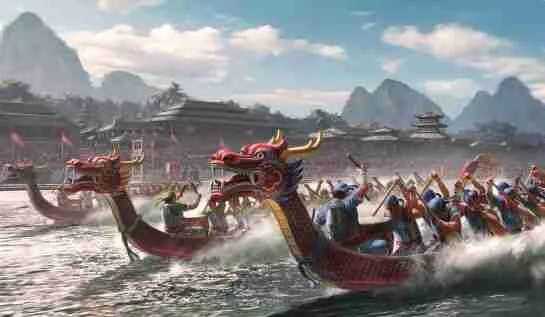
Qing Dynasty Yellow Dragon Banner
The “Three-Triangle Yellow Dragon Flag” was designated as the official flag for Chinese naval vessels by the Qing government in 1862 (during the reign of Emperor Tongzhi). It is said that the design concept of the yellow dragon flag was derived from the banner of the Zhenghuangqi (Plain Yellow Banner) of the Eight Banners of the Manchu Qing dynasty. However, in September 1881 (during the reign of Emperor Guangxu), when the two cruisers “Yangwei” and “Chaoyong” purchased from Britain returned to China, it was decided to change the triangular flag to a rectangular one to align with the international standards.
The flag is made of feathered fabric, with a bright yellow color. It features a five-clawed flying dragon in blue, with its head facing upward. There are four sizes of flags: the first size is 1 zhang 5 chi 6 cun in length and 1 zhang 6 cun 5 fen in width; the second size is 1 zhang 3 chi 9 cun in length and 9 chi 5 cun in width; the third size is 1 zhang 1 chi 5 cun in length and 7 chi 6 cun in width; the fourth size is 9 chi 6 cun in length and 6 chi 3 cun in width. The flag for the Admiral is a rectangular flag with five colors, while other officers use rectangular flags with three colors, with an anchor-shaped decoration in the upper corner.
On May 26, 1889, Minister Zhang Yinhan, who was sent to the United States, proposed to adopt the rectangular yellow dragon flag as the national flag. The yellow color represents the Manchu ethnic group, and the dragon on the flag symbolizes the emperor. The flag was flown nationwide from 1900 until the downfall of the Qing dynasty.
Chinese dragon and phoenix?
The Chinese dragon and phoenix are two mythical creatures deeply rooted in Chinese culture and symbolism. They hold significant cultural, spiritual, and historical meanings.
The dragon, known as “long” in Chinese, is revered as a powerful and benevolent creature. It is considered the ruler of all creatures and is associated with strength, good fortune, and prosperity. The dragon is often depicted as a long, serpentine creature with scales, horns, and the ability to control water-related elements like rain and rivers. It symbolizes imperial power, leadership, and wisdom. The dragon is a common motif in Chinese art, architecture, and traditional celebrations, representing the essence of Chinese culture.
On the other hand, the phoenix, known as “fenghuang” in Chinese, is a mythical bird with vibrant plumage and a graceful appearance. It is believed to be a symbol of auspiciousness, virtue, and feminine power. The phoenix is associated with beauty, harmony, and renewal. In Chinese mythology, it represents the empress and is considered the counterpart to the dragon, symbolizing the yin (female) energy. The phoenix is often depicted with other mythical creatures, flowers, and auspicious symbols in Chinese art and is closely associated with prosperity and good luck.
The dragon and phoenix are frequently portrayed together in traditional Chinese art and are seen as a harmonious pair. They symbolize the union of yin and yang, representing balance, marital bliss, and the ideal relationship between husband and wife. The dragon is associated with the emperor, while the phoenix is associated with the empress, making them symbols of imperial power and marital harmony.
The imagery of the dragon and phoenix is commonly seen in various aspects of Chinese culture, including wedding decorations, embroidered textiles, ceramics, and traditional costumes. They are also featured prominently in festivals, such as the Dragon Boat Festival and Chinese New Year, where dragon and phoenix dances and performances take place.
Overall, the dragon and phoenix hold deep cultural significance in China, representing power, fortune, balance, and the harmonious union of complementary forces.

Chinese dragon and tiger
The Chinese dragon and tiger are two powerful and revered creatures in Chinese culture, often depicted together to symbolize contrasting yet complementary forces.
The dragon, as mentioned earlier, is a mythical creature associated with strength, good fortune, and imperial power. It represents yang energy, which is masculine and active. The dragon is seen as the ruler of all creatures and is believed to bring prosperity, protection, and success. It is often depicted as a long, serpentine creature with scales, claws, and the ability to control water-related elements.
The tiger, known as “hu” in Chinese, is considered the king of all land animals and represents yin energy, which is feminine and passive. The tiger is associated with courage, bravery, and protection. It symbolizes power, ferocity, and righteousness. In Chinese culture, the tiger is believed to ward off evil spirits and bring luck and strength.
When the dragon and tiger are depicted together, they represent the harmonious balance of opposing forces. The dragon embodies the celestial and spiritual realms, while the tiger represents the earthly and physical realms. The combination of the dragon’s cosmic power and the tiger’s earthly strength symbolizes a perfect balance between heaven and earth, yin and yang, and the union of opposing energies.
In some traditional Chinese martial arts, the dragon and tiger are also associated with different fighting styles and techniques. The dragon style emphasizes fluidity, grace, and circular movements, while the tiger style focuses on power, speed, and direct attacks. These styles are often practiced together to cultivate a balanced approach to combat.
In summary, the Chinese dragon and tiger represent contrasting forces of power and strength. They symbolize the harmonious balance between yin and yang, celestial and earthly energies, and are often depicted together to represent the union of opposing yet complementary forces in Chinese culture.
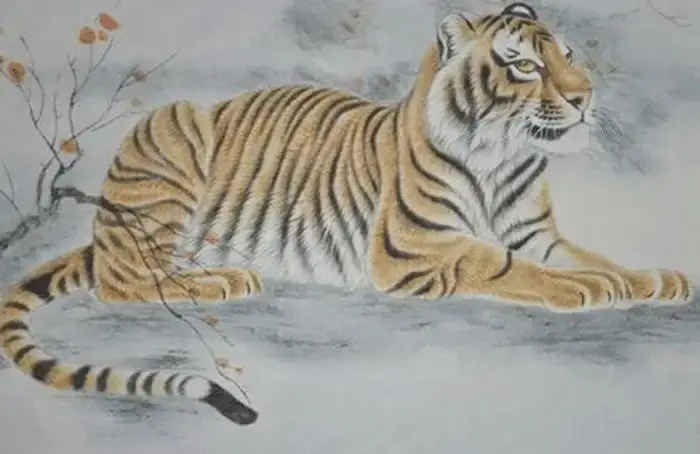
Chinese dragon and horse
The Chinese dragon and horse are both significant creatures in Chinese culture, often depicted together in various forms of artwork and symbolism.
The Chinese dragon, as mentioned before, is a legendary creature associated with power, good fortune, and imperial authority. It is considered a symbol of strength, wisdom, and auspiciousness. The dragon is often depicted as a long, serpentine creature with scales, claws, and the ability to control water-related elements. In Chinese mythology, the dragon is believed to bring rain, promote fertility, and protect against evil spirits.
The horse, known as “ma” in Chinese, is also highly regarded and has a long history of cultural significance. Horses are seen as symbols of speed, vitality, loyalty, and success. In Chinese culture, the horse is associated with achievements, progress, and overcoming obstacles. They are considered noble creatures that embody positive qualities and are often associated with auspicious events.
When the dragon and horse are depicted together, they can represent various concepts depending on the context. The combination of the dragon’s celestial power and the horse’s earthly energy symbolizes a harmonious union between heaven and earth. It can represent the blending of spiritual and physical forces, as well as the integration of wisdom and action.
The dragon and horse pairing can also symbolize ambition and success. The dragon represents lofty goals and aspirations, while the horse represents the energy, speed, and determination to achieve them. It signifies the drive and determination to overcome challenges and achieve greatness.
In traditional Chinese art and literature, depictions of the dragon and horse together are often seen as a favorable omen, symbolizing prosperity, power, and successful endeavors. This imagery is often used to invoke positive energy, luck, and blessings in various aspects of life.
Overall, the combination of the Chinese dragon and horse represents a harmonious blend of celestial and earthly energies, wisdom and action, and ambition and achievement. They are regarded as powerful symbols of auspiciousness, success, and positive attributes in Chinese culture.
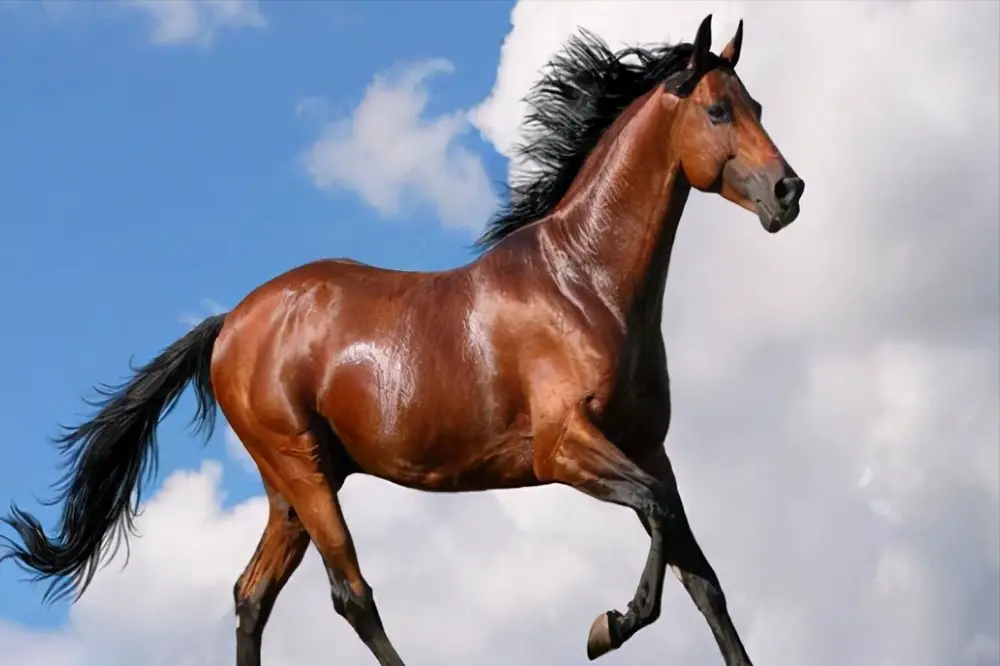
Chinese dragon and peacock
The Chinese dragon and peacock are two distinct creatures with significant cultural symbolism in Chinese mythology and folklore.
Chinese Dragon:
The Chinese dragon, or “Long” in Mandarin, is a legendary creature deeply rooted in Chinese culture. It is considered a symbol of power, strength, and good fortune. Unlike the Western concept of dragons as fearsome and destructive, the Chinese dragon is regarded as benevolent, wise, and bringer of auspiciousness.
In Chinese mythology, the dragon is associated with the Emperor, representing imperial authority and divine protection. It is believed to have control over the elements, especially water, and is associated with rainfall and prosperity for agricultural harvests. The dragon is depicted as a long, serpentine creature with the body of a snake, the scales of a fish, the talons of an eagle, and the antlers of a deer. It is often shown with a majestic mane, a bearded face, and a series of prominent whiskers called “fengguang.”
The dragon is a popular motif in Chinese art, architecture, and celebrations. Dragon dances and dragon boat races are performed during festivals like Chinese New Year, symbolizing the dragon’s awakening and bringing good luck and fortune to the community.
Peacock:
The peacock, known as “Kongque” in Mandarin, is also an important symbol in Chinese culture. It is associated with beauty, grace, and dignity. The peacock’s colorful and elaborate plumage has made it a symbol of nobility, immortality, and regal splendor.
In Chinese mythology, the peacock is often portrayed as a guardian of heavenly realms and a protector of righteousness. It is believed to possess the ability to drive away evil spirits and bring peace and harmony. The peacock’s feathers are considered a powerful symbol of protection and are often used in traditional rituals and ceremonies.
The peacock is commonly depicted in Chinese art, textiles, and architecture, showcasing its vibrant feathers and graceful posture. It is also a popular subject in poetry and literature, representing beauty, elegance, and the pursuit of refined aesthetics.
While the Chinese dragon and peacock are distinct creatures, they both hold significant cultural symbolism in Chinese tradition. The dragon represents power, good fortune, and imperial authority, while the peacock symbolizes beauty, nobility, and protection. Their imagery is frequently incorporated into various aspects of Chinese culture, reflecting their enduring significance in Chinese mythology and artistic expression.
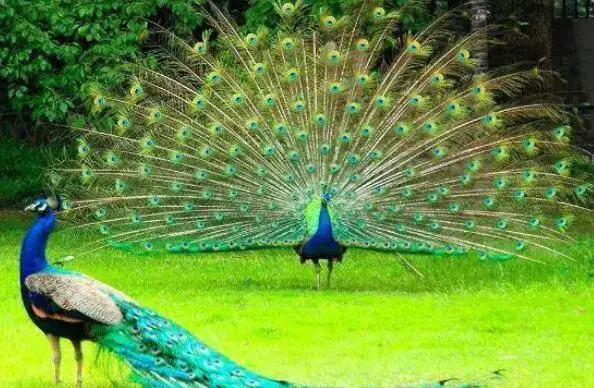
are Chinese dragons good luck?
Yes, Chinese dragons are considered symbols of good luck and fortune in Chinese culture. They are believed to bring blessings, prosperity, and positive energy. The Chinese dragon is associated with auspicious qualities such as power, wisdom, and strength. It is believed to have control over the elements, particularly water, which is vital for agricultural success and abundance.
Chinese dragons are often depicted in art, architecture, and celebrations to invoke good fortune and ward off evil spirits. Dragon dances and dragon boat races are performed during festive occasions like Chinese New Year to bring luck and prosperity to the community. The dragon’s image is also used in various forms of decor, such as dragon sculptures, paintings, and carvings, to invite positive energy and blessings into homes and businesses.
Furthermore, the Chinese dragon is closely associated with the Emperor, symbolizing imperial power and divine protection. In ancient China, the dragon was a revered creature believed to bring harmony and prosperity to the nation.
Overall, the Chinese dragon is widely regarded as a symbol of good luck, and its presence is believed to bring positive influences and blessings to those who embrace its symbolism.
Chinese dragon vs Western dragon
Chinese dragons and Western dragons are mythical creatures that have distinct characteristics and symbolism in their respective cultures. Here are some key differences between the two:
Appearance:
Chinese Dragon: Chinese dragons are often depicted as long, serpentine creatures with scaled bodies. They typically have four legs, although some variations may have fewer or none at all. They are often portrayed with a mane, whiskers, and prominent horns. Chinese dragons are known for their colorful, elaborate designs.
Western Dragon: Western dragons are often portrayed as large, reptilian creatures with wings. They have a long, muscular body, scales, and sharp claws. Western dragons can have different numbers of legs, ranging from four to none. They are commonly depicted with bat-like wings, horns, and a tail.
Symbolism:
Chinese Dragon: In Chinese culture, dragons are associated with power, prosperity, and good luck. They are considered benevolent creatures and are believed to bring blessings and fortune. Chinese dragons are also associated with the emperor and represent imperial authority and wisdom.
Western Dragon: In Western mythology, dragons are often depicted as fearsome and malevolent creatures. They are often associated with destruction, chaos, and greed. Western dragons are frequently portrayed as adversaries that need to be defeated by heroes or knights.
Cultural Significance:
Chinese Dragon: Chinese dragons have a long history and are deeply rooted in Chinese mythology, folklore, and art. They are an important symbol in various aspects of Chinese culture, including festivals, architecture, and martial arts. Chinese New Year celebrations often feature dragon dances to bring luck and ward off evil spirits.
Western Dragon: Western dragons have a significant presence in European folklore, legends, and literature. They have been portrayed in famous stories such as the legend of Saint George and the Dragon. Western dragons are commonly associated with medieval tales, fantasy literature, and modern popular culture.
Elemental Associations:
Chinese Dragon: Chinese dragons are often associated with water-related elements such as rivers, lakes, and rainfall. They are believed to have control over water and are connected to the concept of rain and fertility.
Western Dragon: Western dragons are often associated with fire and are known for their ability to breathe fire. They are considered creatures of the sky and are associated with the elements of air and fire.
It’s important to note that these are general characteristics, and variations can exist within each cultural tradition. The depictions and interpretations of dragons can vary across different time periods, regions, and individual artistic interpretations.
Chinese dragon vs Naga
Chinese dragons and Nagas are mythical creatures from different cultural traditions. While they both have serpentine features, there are notable differences between Chinese dragons and Nagas. Here are some key distinctions:
Cultural Origin:
Chinese Dragon: Chinese dragons originate from Chinese mythology and have a rich history in Chinese culture, art, and folklore. They are deeply embedded in Chinese traditions and are considered symbols of power, luck, and wisdom.
Naga: Nagas are mythological beings found in Hindu, Buddhist, and Southeast Asian folklore. They are particularly prominent in Indian and Southeast Asian cultures, often associated with water, fertility, and protection.
Physical Appearance:
Chinese Dragon: Chinese dragons are usually depicted as long, sinuous creatures with a serpentine body. They typically have four legs, although some variations may have fewer or none at all. Chinese dragons often have elaborate, colorful scales, a prominent mane, whiskers, and horns. They are known for their majestic and awe-inspiring appearance.
Naga: Nagas are depicted as serpents or serpentine beings with a snake-like body. They can vary in size and appearance, ranging from small serpents to massive creatures with multiple heads. Nagas are often portrayed with hooded heads and sometimes have human upper bodies.
Symbolism and Attributes:
Chinese Dragon: Chinese dragons are symbols of power, prosperity, and good luck. They are revered as benevolent creatures that bring blessings and fortune. Chinese dragons represent imperial authority, wisdom, and the cosmic forces of nature.
Naga: Nagas are associated with various attributes depending on the cultural context. They are often connected to water, fertility, protection, and divine wisdom. Nagas are considered guardians and protectors of sacred places, treasures, and knowledge.
Cultural Significance:
Chinese Dragon: Chinese dragons have a strong cultural significance in China and are widely celebrated in festivals and ceremonies. Dragon dances and dragon boat races are popular during Chinese New Year and other festive occasions.
Naga: Nagas hold significant importance in Hinduism, Buddhism, and Southeast Asian cultures. They are often depicted in temples, shrines, and religious art. Nagas are associated with water bodies, and their images can be found near rivers, lakes, and sacred sites.
It’s important to recognize that cultural interpretations of dragons and Nagas can vary, and their depictions may differ across different regions and time periods. While there may be similarities in their serpentine form, the specific characteristics, symbolism, and cultural roles assigned to Chinese dragons and Nagas can differ significantly based on their respective cultural contexts.
is Chinese dragon real?
The Chinese dragon, as depicted in mythology, folklore, and traditional art, is a creature of imagination and symbolism rather than a real, physical entity. It is a legendary creature that holds significant cultural and spiritual meaning in Chinese culture.
Unlike mythical creatures such as dragons, which are commonly portrayed as large, winged, and fire-breathing creatures in Western folklore, the Chinese dragon has its own distinct characteristics. The Chinese dragon is often depicted as a long, serpentine creature with scaled body, clawed feet, and the ability to fly. It is associated with water, has a benevolent nature, and symbolizes power, wisdom, and auspiciousness.
While the Chinese dragon does not exist as a tangible creature in the natural world, its symbolism and cultural significance have endured for thousands of years in Chinese culture. The dragon is deeply woven into Chinese mythology, art, philosophy, and symbolism, representing imperial power, good luck, and the harmonious relationship between humans and nature.
The Yingkou Dragon Incident
On August 8, 1934, a dragon suddenly appeared in Yingkou. According to the recollections of elderly witnesses at the time, this dragon appeared twice. During the first appearance, it was lying on the ground in Yingkou. Many people rushed to pour water on it to prevent it from drying out and dying. After a few days, the dragon suddenly left.
The second appearance occurred in a cluster of reeds. When the dragon was discovered, it had already been dead for several days, and local farmers collected many dragon scales from its surroundings.
After the dragon’s carcass had completely decayed, the authorities at the pseudo Yingkou Sixth Police Station displayed the dragon bones near Xihai Pass for several days, causing a great sensation. It is said that there was a constant stream of visitors wanting to see the dragon bones, resulting in a temporary increase in train ticket prices to Yingkou. The intact dragon bone skeleton was eventually kept in a normal school in Yingkou. However, due to frequent conflicts and unrest, the dragon bones were lost and their whereabouts remain unknown to this day.
Even today, there is still evidence of the Yingkou Dragon Incident. However, due to the fact that the factual truth contradicts scientific explanations, historians and biologists remain silent and refrain from making any conclusions.
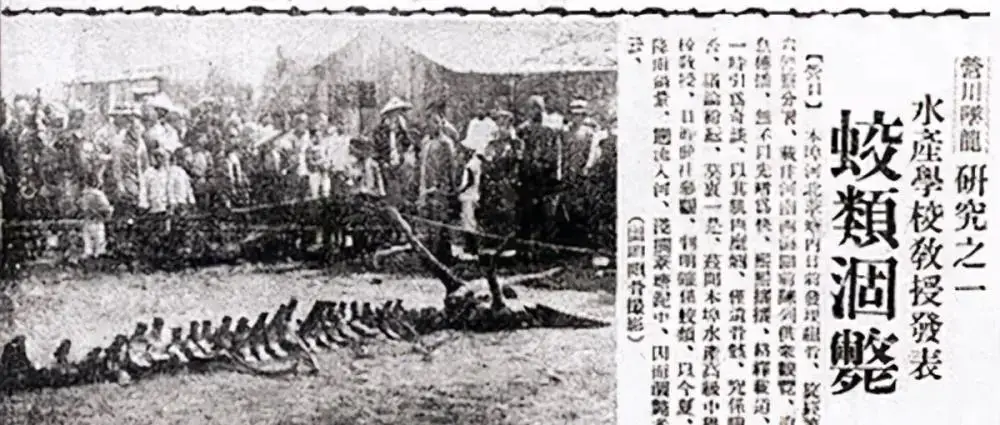
dream dragon meaning
- Dreaming of a dragon is considered an auspicious omen indicating an overall rise in fortune. Dragons are seen as fortunate symbols and frequently appear in Eastern legends and mythology. Seeing a dragon in a dream suggests that you are an extraordinary individual, and the heavens will bestow upon you opportunities for success, wealth, and glory. It is important to seize these opportunities.
- If a pregnant woman dreams of a dragon, it signifies the prediction of giving birth to a baby boy in the autumn. However, it is advised not to cut or chop trees as it may disturb the pregnancy.
- For businesspeople, dreaming of a dragon indicates confidence and the potential to gain wealth. It is important to be cautious of fire hazards.
- For individuals in romantic relationships, dreaming of a dragon suggests emotional instability, lack of commitment, potential failure in love, or the possibility of a second marriage.
- For those who are in their zodiac year (本命年), dreaming of a dragon indicates a separation between Yin and Yang energies, suggesting a lack of smoothness in luck. It is advisable to focus on cultivating one’s character and retreat when necessary.
- If you dream of giving birth to a blue dragon, it indicates that your child will grow up to become an influential figure, someone of great talent and success.
- Dreaming of a dragon entering your home, crawling into the stove, or diving into the water suggests a prosperous financial situation and the potential for promotion.
- If you dream of a snake transforming into a dragon, it signifies that you will receive assistance from a noble person or influential figure.
- Dreaming of a dragon descending and landing on the ground predicts unexpected financial gains in the near future.
Conclusion.
There is no clear origin of where dragons came from, nor is there proof that they ever existed. Whether fictional or not, these mystical creatures clear hold an important position in Chinese culture. Many Chinese both in and out of China use it as a symbol of identification.
References:
Zhang, Zhi. “Chinese Traditional Culture.” Beijing: Higher Education Press, 2010.
Sun, Shoudao. “The Study of Sanxingtala Jade Dragon.” Cultural Relics, 1984(6).
Feng, Shi. “Astronomical Study of Tomb No. 45 in Xishuipo, Henan.” Cultural Relics, 1990(3).
Liu, Zhixiong, and Yang, Jingrong. “Dragons and Chinese Culture.” Beijing: People’s Publishing House, 1996: 131.
Liu, Zhixiong, and Yang, Jingrong. “Dragons and Chinese Culture.” Beijing: People’s Publishing House, 1996: 245.
Lu, Xueping, and Liu, Zanai. “Dragons and Ancient Chinese Culture.” Science, Education and Cultural Exchange, 2008(1).
汉族:一个历史从未中断过的历史悠久的民族 – Han People: A Historically Continuous and Ancient Ethnic Group – Sourced from China Economic Net, referenced on January 11, 2021.
伏羲文化及其精神实质 – Fuxi Culture and Its Spiritual Essence – Sourced from the Publicity Department of the Huaiyang District Committee of the Communist Party of China, referenced on January 11, 2021.
[柯杨]敦煌遗书中有关伏羲神话的记载与甘肃民间活态神话之比较 – [Ke Yang] Comparing Records of Fuxi Mythology in Dunhuang Manuscripts with Folklore in Gansu – Sourced from China Folklore Network, referenced on October 4, 2021.
[吕微]楚地帛书敦煌残卷与佛教伪经中的伏羲女娲故事 – [Lv Wei] Chu Region Silk Manuscripts in Dunhuang Fragments and the Fuxi and Nuwa Story in Buddhist Apocryphal Scriptures – Sourced from China Folklore Network, referenced on October 4, 2021.
李治亭主编.关东文化大辞典[M].沈阳:辽宁教育出版社,1993.08:第568页 – Li Zhiting (Editor-in-Chief). Great Dictionary of Kanto Culture [M]. Shenyang: Liaoning Education Press, 1993.08: Page 568.
地宫石函 描绘哪吒战龙王 – The Underground Palace Stone Box Depicts Nezha Battling the Dragon King – Sourced from Guangming Net, referenced on May 29, 2022.
今晚报数字报-来天妃宫遗址赏“龙城瑰宝” – Tonight’s Digital News – Visit the Site of Tianfei Palace to Admire the “Dragon City Treasures” – Sourced from Jinwan Net, referenced on May 29, 2022.
《生肖传奇》之十二生肖总动员 – Legendary Zodiac: The Grand Gathering of the Twelve Zodiac Animals – Sourced from CCTV, referenced on August 12, 2022.
周永年主编. 文白对照全译诸子百家集成 搜神记 博物志[M]. 2002.77页 – Edited by Zhou Yongnian. Complete Translation of Various Masters and Hundred Schools in Bilingual Texts: Sushenji and Records of Antiquity [M]. 2002. Page 77.
李贵兴主编. 聊城游览文化[M]. 2019.338页 – Edited by Li Guixing. Cultural Tourism in Liaocheng [M]. 2019. Page 338.
韩亚光. 中国三部古典文学名著成书之谜[M]. 2019.73页 – Han Yaguang. The Mystery of the Compilation of Three Classical Chinese Literary Masterpieces [M]. 2019. Page 73.
全福禄,尹万和编著. 不可不知的易学先贤[M]. 2016.118页 – Edited by Quan Fulu and Yin Wanhe. Must-Know Predecessors in the Study of the I Ching [M]. 2016. Page 118.
种明章,翁德森等. 中学生文库-中国古典长篇小说选讲[M]. 1981.48页 – Edited by Zhong Mingzhang, Weng Desen, and others. Selected Readings of Classical Chinese Novels for Middle School Students [M]. 1981. Page 48.
徐彻,李焱. 道界百仙[M]. 2019.129页 – Xu Che and Li Yan. One Hundred Immortals of Daoism [M]. 2019. Page 129.
刘彦彦著. 封神演义道教文化与文学阐释[M]. 2016.39页 – Written by Liu Yanyan. The Investiture of the Gods: Taoist Culture and Literary Interpretation [M]. 2016. Page 39.
资料:电视剧《十二生肖传奇》分集大纲(5) – Data: Episode Outlines of the TV Series “Legendary Zodiac” (Part 5) – Sourced from Sina, referenced on August 12, 2022.
洛克王国2月23日更新公告-Roco Kingdom-官方网站-腾讯儿童-点亮魔法,放飞童年 – Roco Kingdom Update Announcement on February 23 – Roco Kingdom Official Website – Tencent Children – Lighting Magic, Letting Childhood Soar – Sourced from the Roco Kingdom Official Website, referenced on August 12, 2022.
舞龙 – Dragon Dance – Provided by the People’s Government of Nanjiang County, referenced on September 5, 2022.
舞龙 – Dragon Dance – Provided by the Office of the People’s Government of Wenshui County, referenced on September 5, 2022.
夏征农编. 辞海 [M]. 1999年版缩印本. 上海:上海辞书出版社,2000.1:4710. – Compiled by Xia Zhengnong. Cihai [M]. 1999 Compact Edition. Shanghai: Shanghai Lexicographical Publishing House, 2000.1: Page 4710.
文化随行-“玉”见龙!它为何被称为“中华第一龙”? – Culture on the Go – “Jade” Meets the Dragon! Why is it Called the “First Dragon of China”? – Provided by the Cultural and Tourism Bureau of Binhai New Area, Tianjin, referenced on September 5, 2022.
林屋公子,凤妩编著,魅影 中国古代神灵志异图鉴,万卷出版公司,2020.07,第68页 – Written by Lin Wu Gongzi and Feng Wu. Shadows: An Illustrated Encyclopedia of Ancient Chinese Divine and Mysterious Beings, Wanjuan Publishing Company, 2020.07, Page 68.
何新著,诸神的世界,现代出版社,2019.05,第116页 – Written by He Xin. The World of Gods, Modern Publishing House, 2019.05, Page 116.
欧清煜编. 中华龙文化词典[M]. 2002:320. – Compiled by Ou Qingyu. Dictionary of Chinese Dragon Culture [M]. 2002: Page 320.
驼碑的赑屃 – The Camel Stele and Its Inscriptions – Sourced from Qidian, referenced on November 4, 2022.
首都博物馆–龙的传说 – Capital Museum – Legends of the Dragon – Provided by the Capital Museum, referenced on February 5, 2023.
“二月二,龙抬头” – “February 2nd, the Dragon Lifts Its Head” – Sourced from China Net, referenced on February 23, 2023.
龙形天象将出现在夜空 – Dragon-Shaped Celestial Phenomenon to Appear in the Night Sky – Sourced from Sina, referenced on February 23, 2023.
“龙抬头”后春意浓! – Spring Blossoms After the “Dragon Lifts Its Head”! – Sourced from Life Daily, referenced on February 23, 2023.
故宫中的水文化 – The Culture of Water in the Forbidden City – Sourced from People’s Daily Online, referenced on May 15, 2023.
东方应龙:龙族中的王者 – Eastern Yinglong: The King of the Dragon Clan – Provided by People’s Daily, dated September 16, 2022, referenced on August 18, 2023.
yeah bookmaking this wasn’t a speculative determination outstanding post! .
Everything is very open with a very clear description of the challenges. It was truly informative. Your website is extremely helpful. Many thanks for sharing!